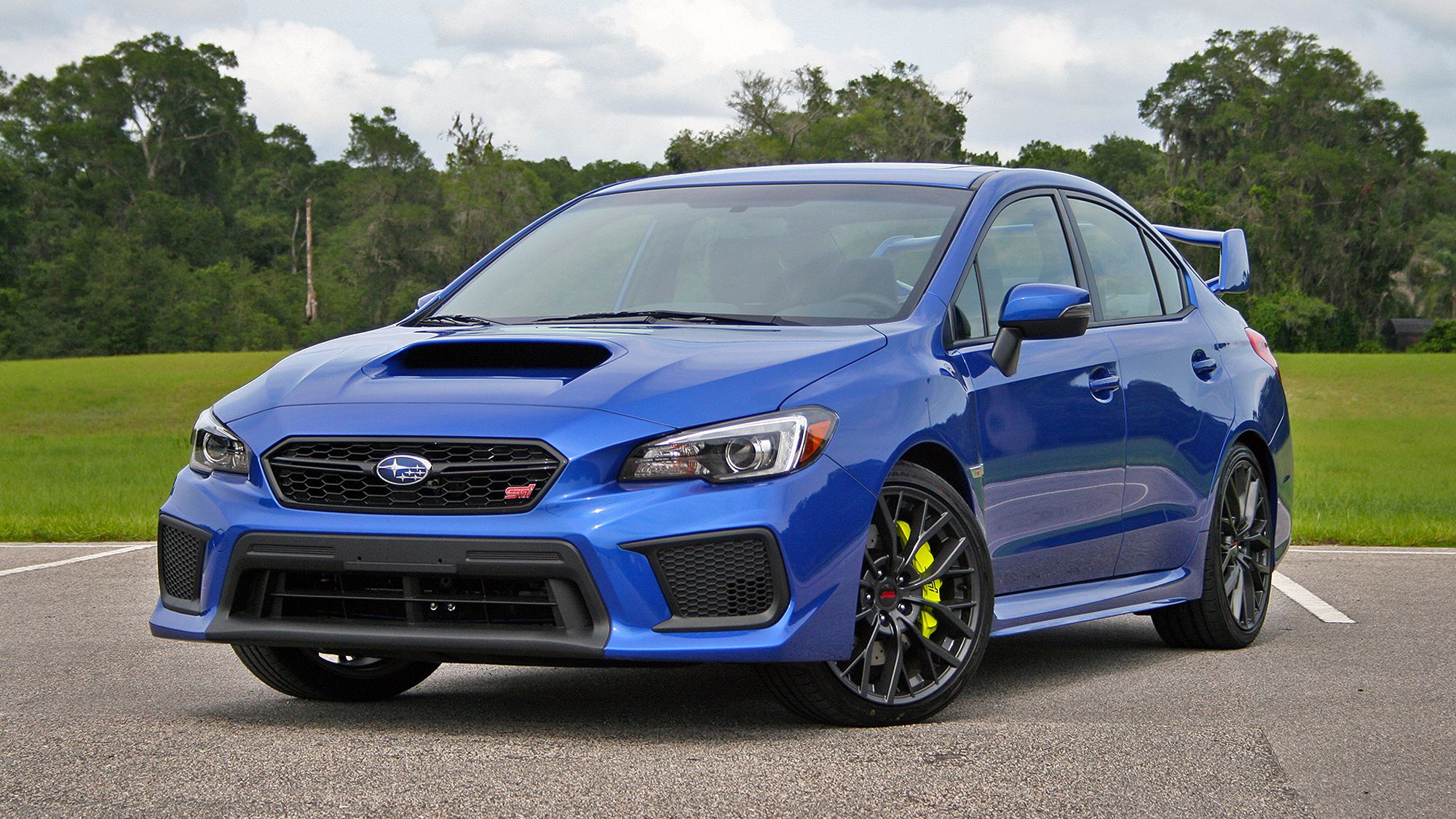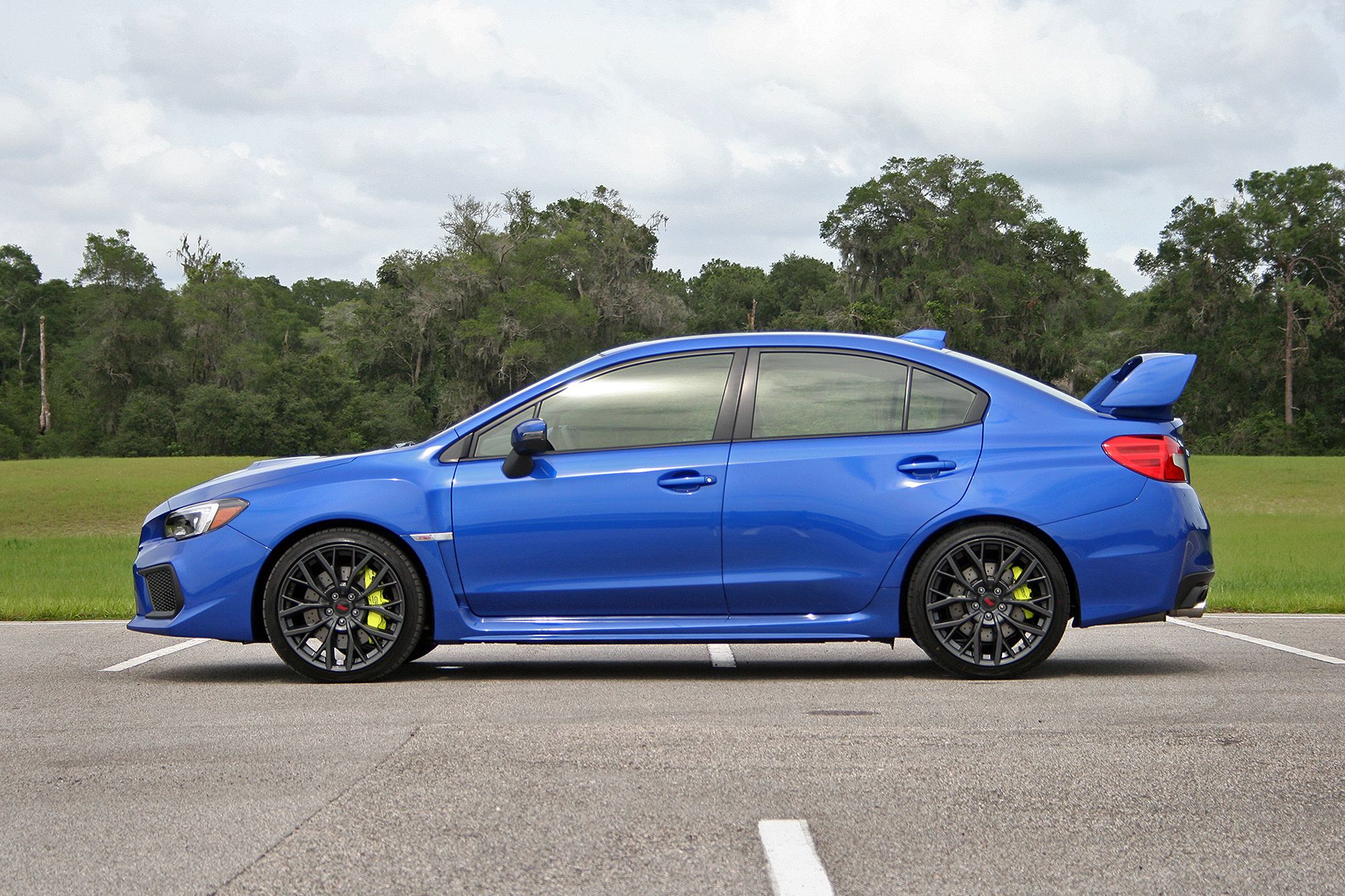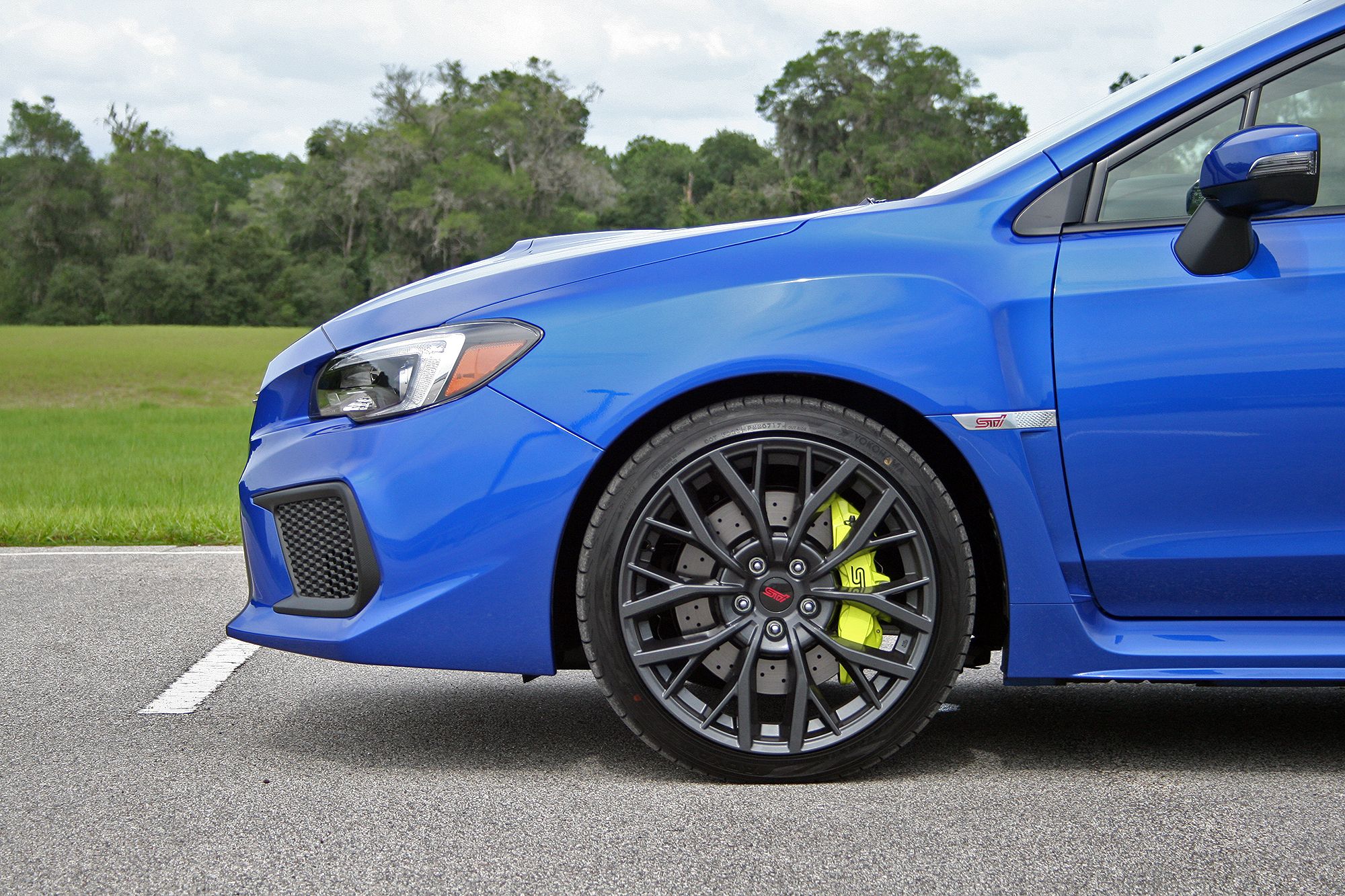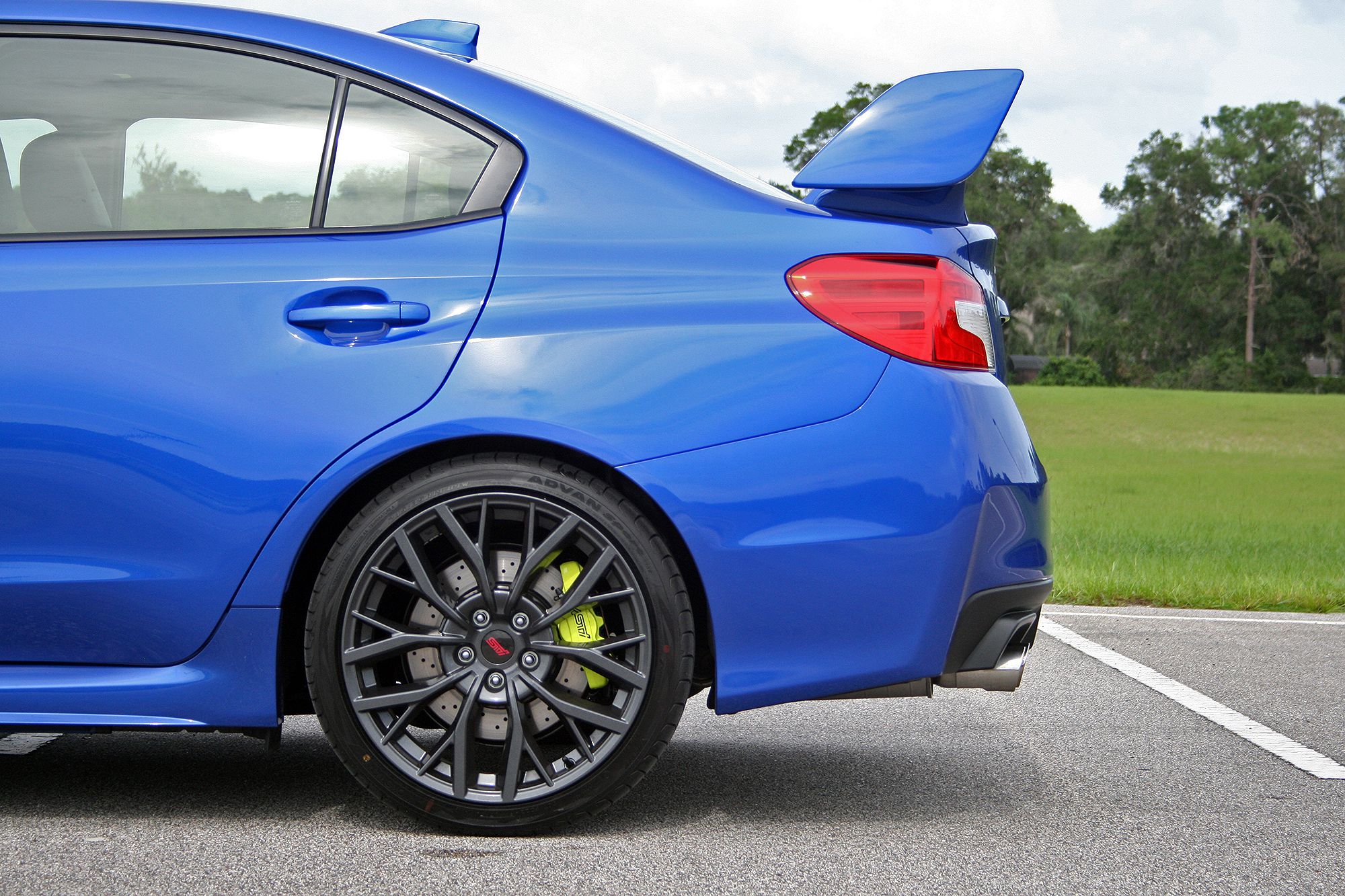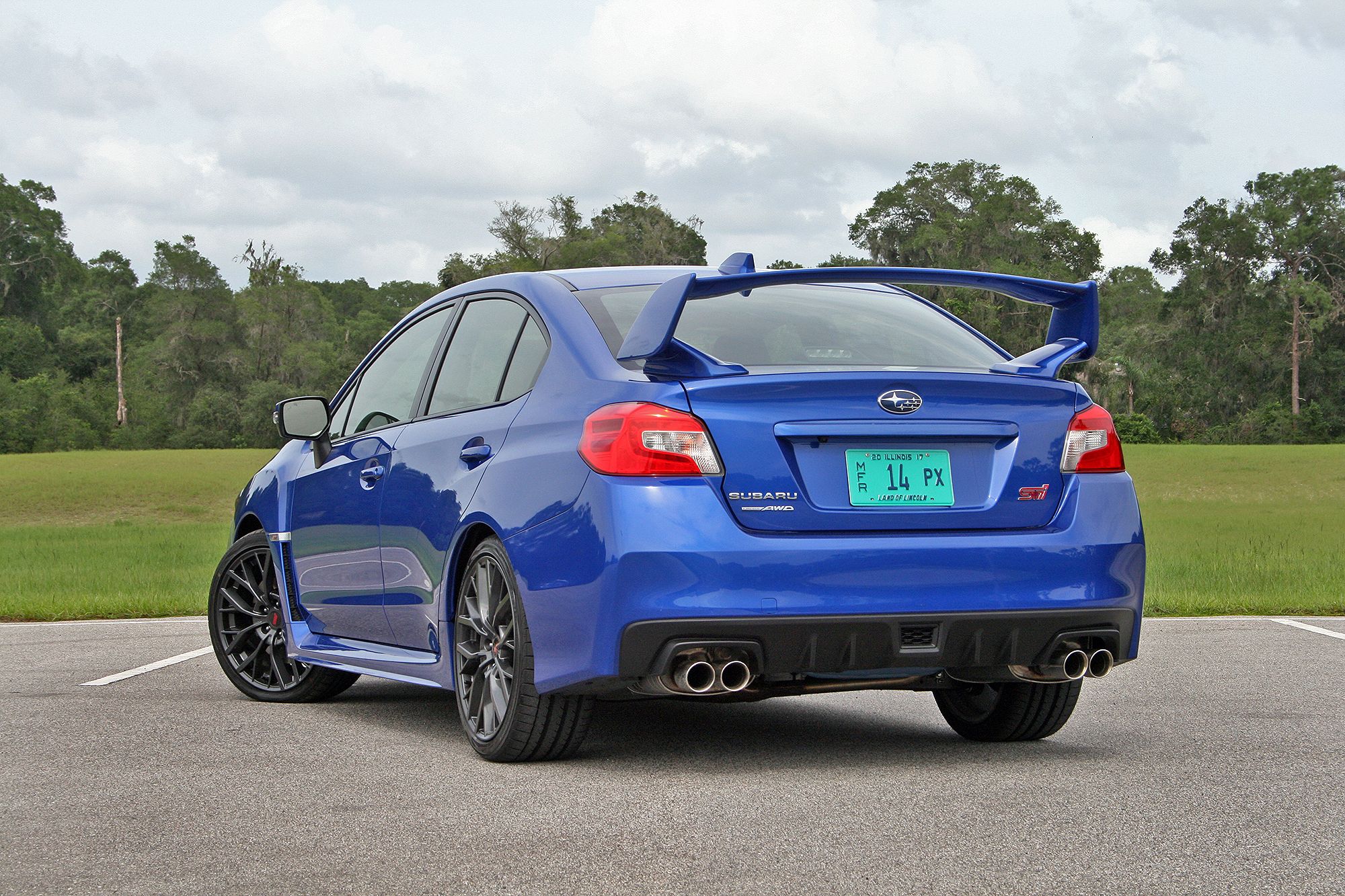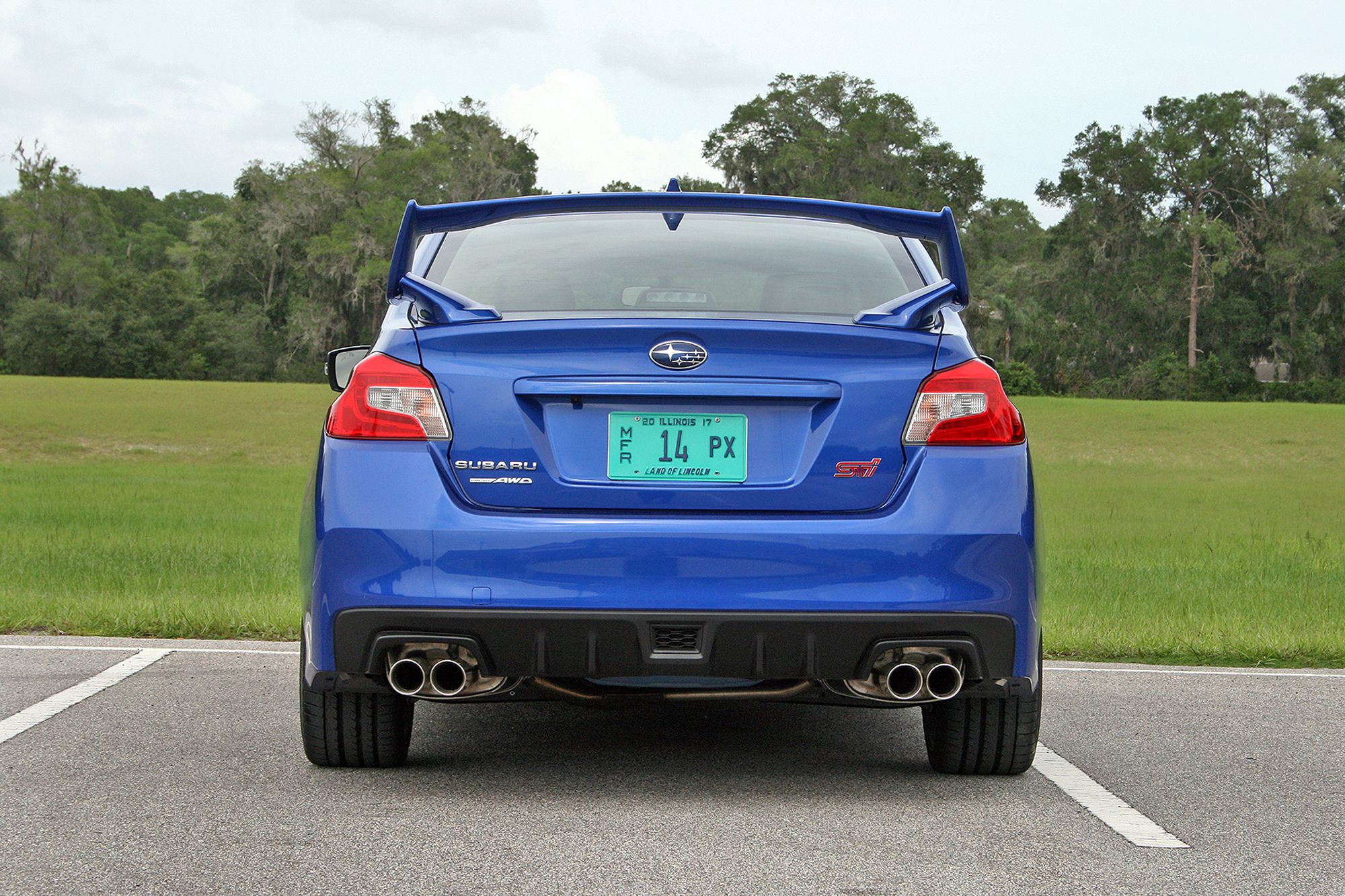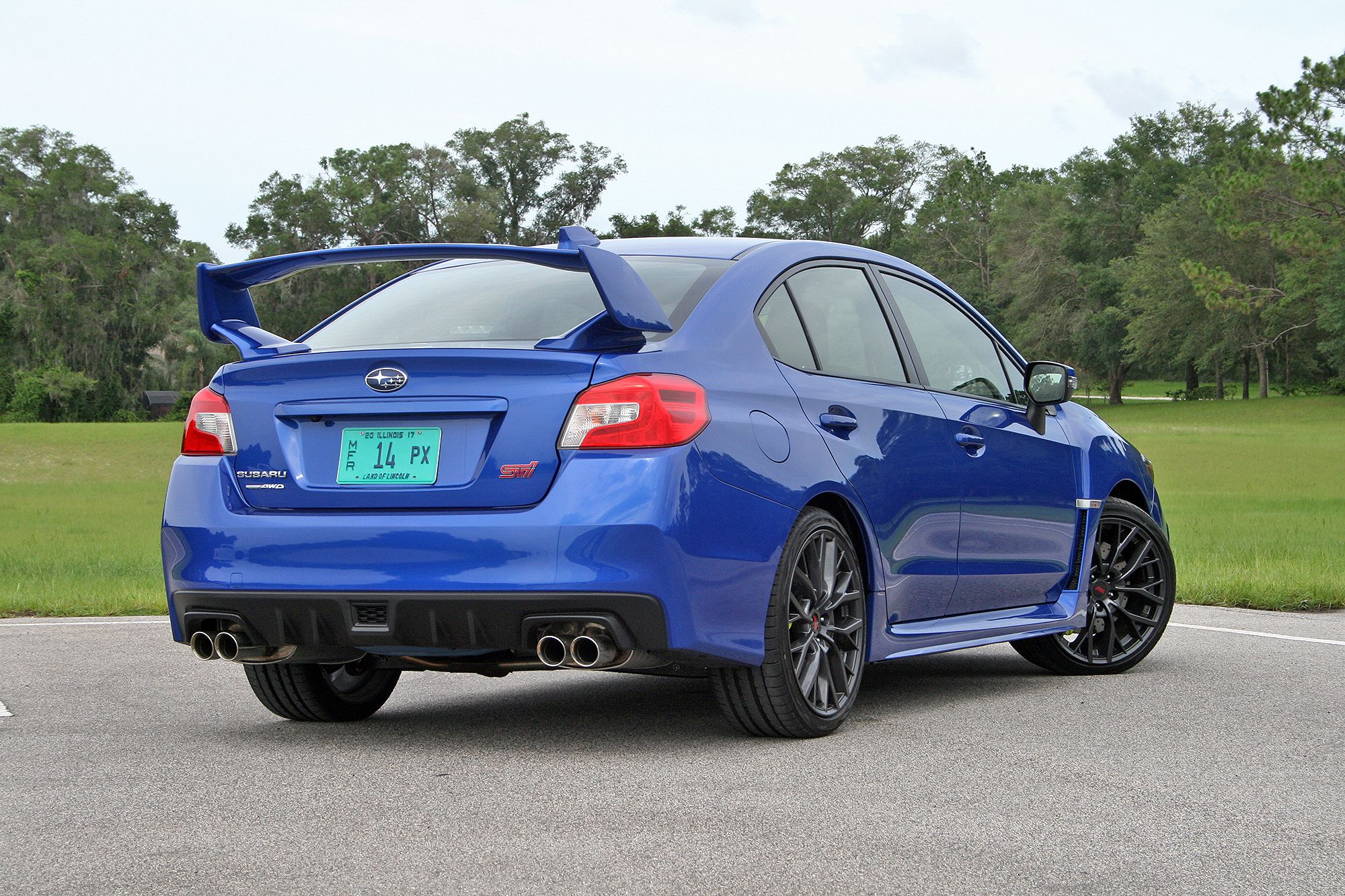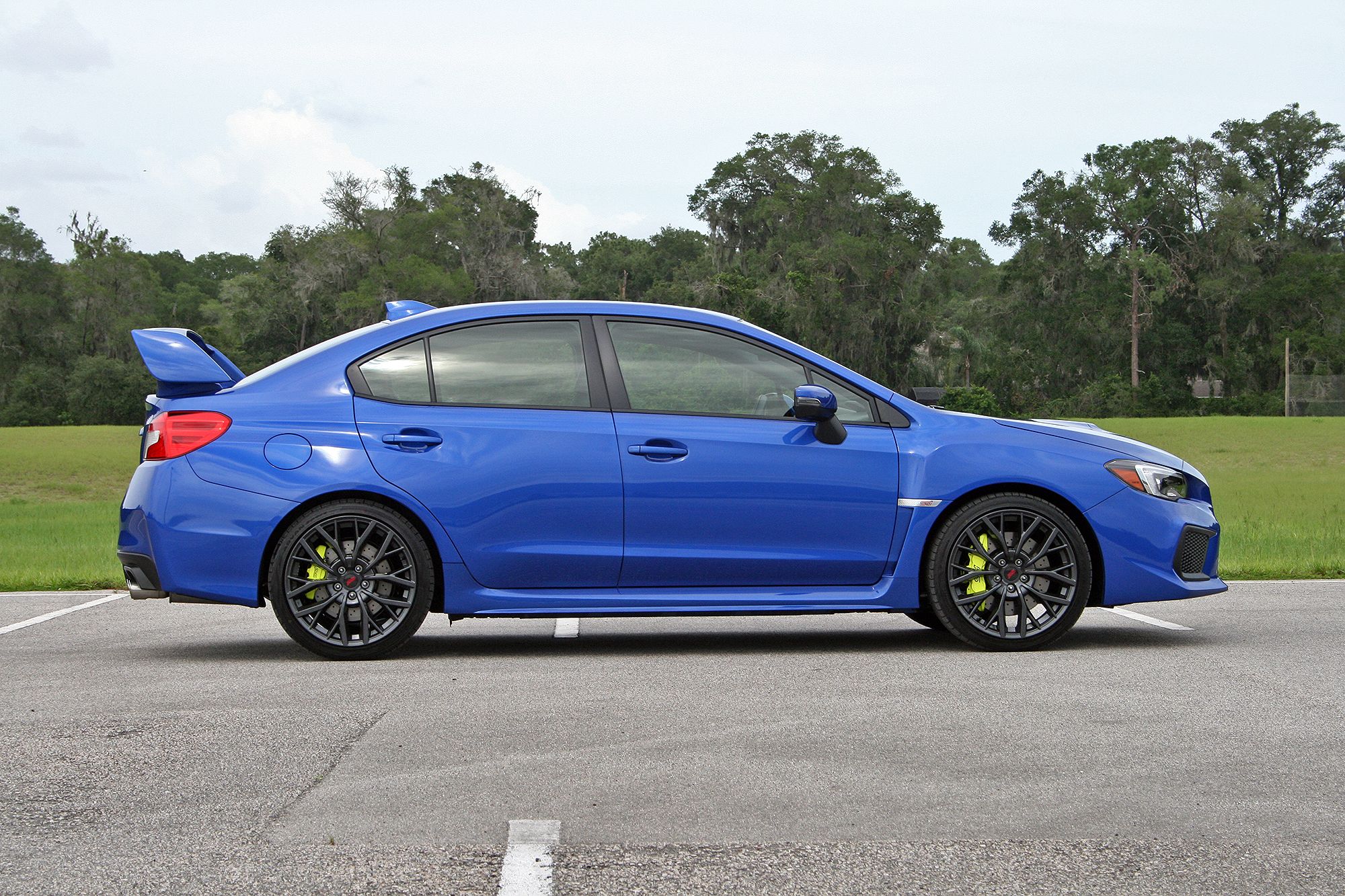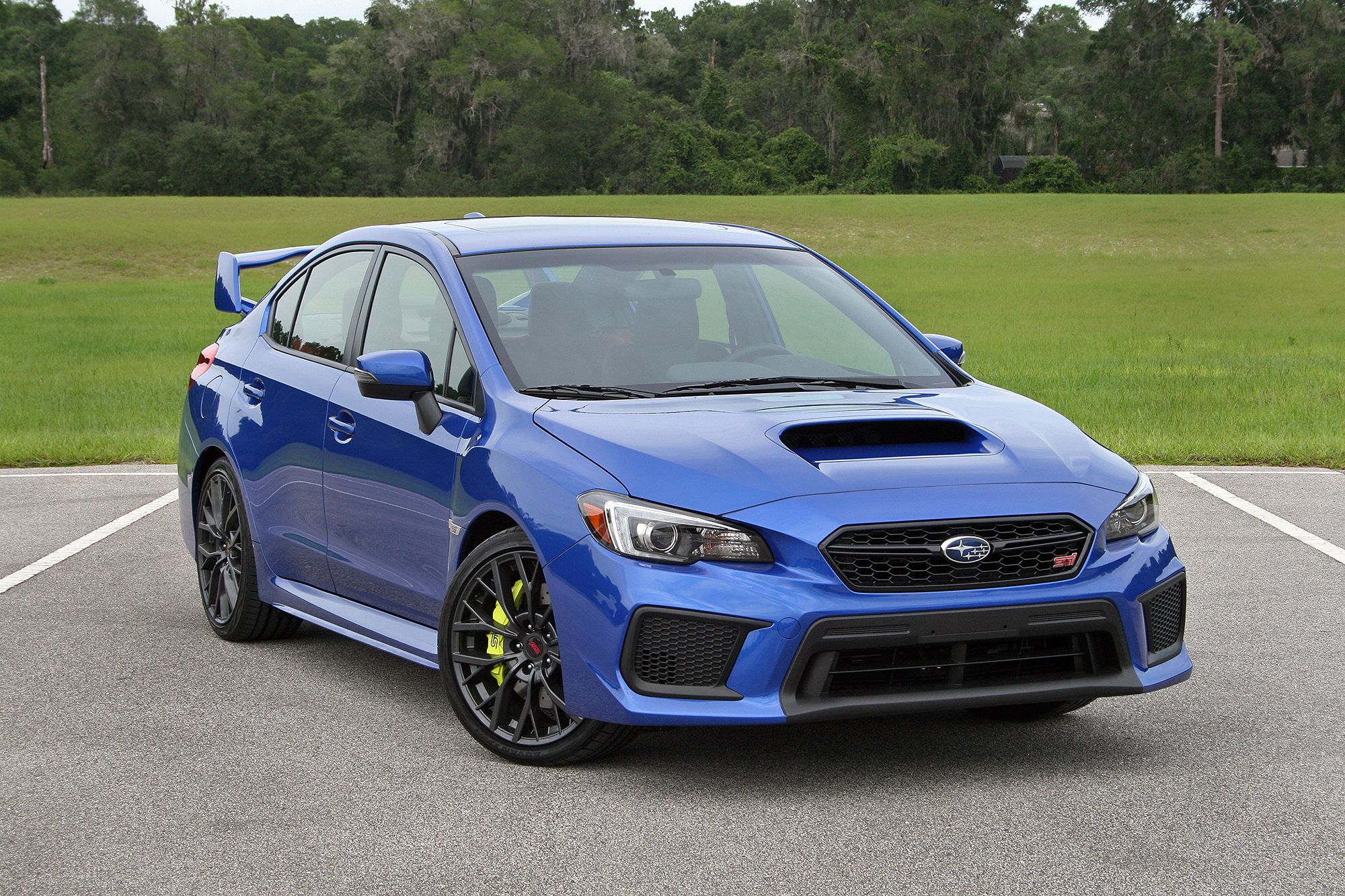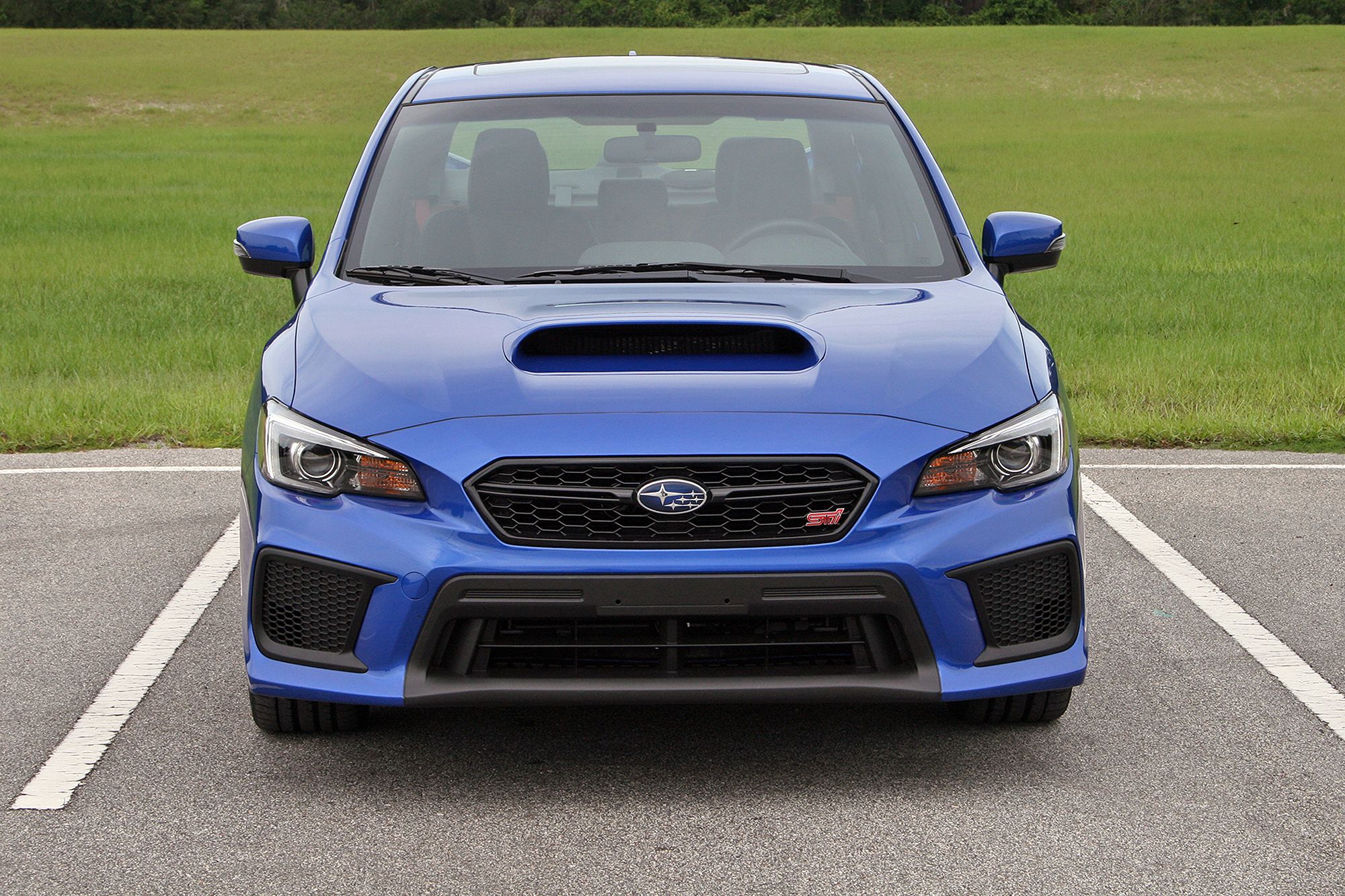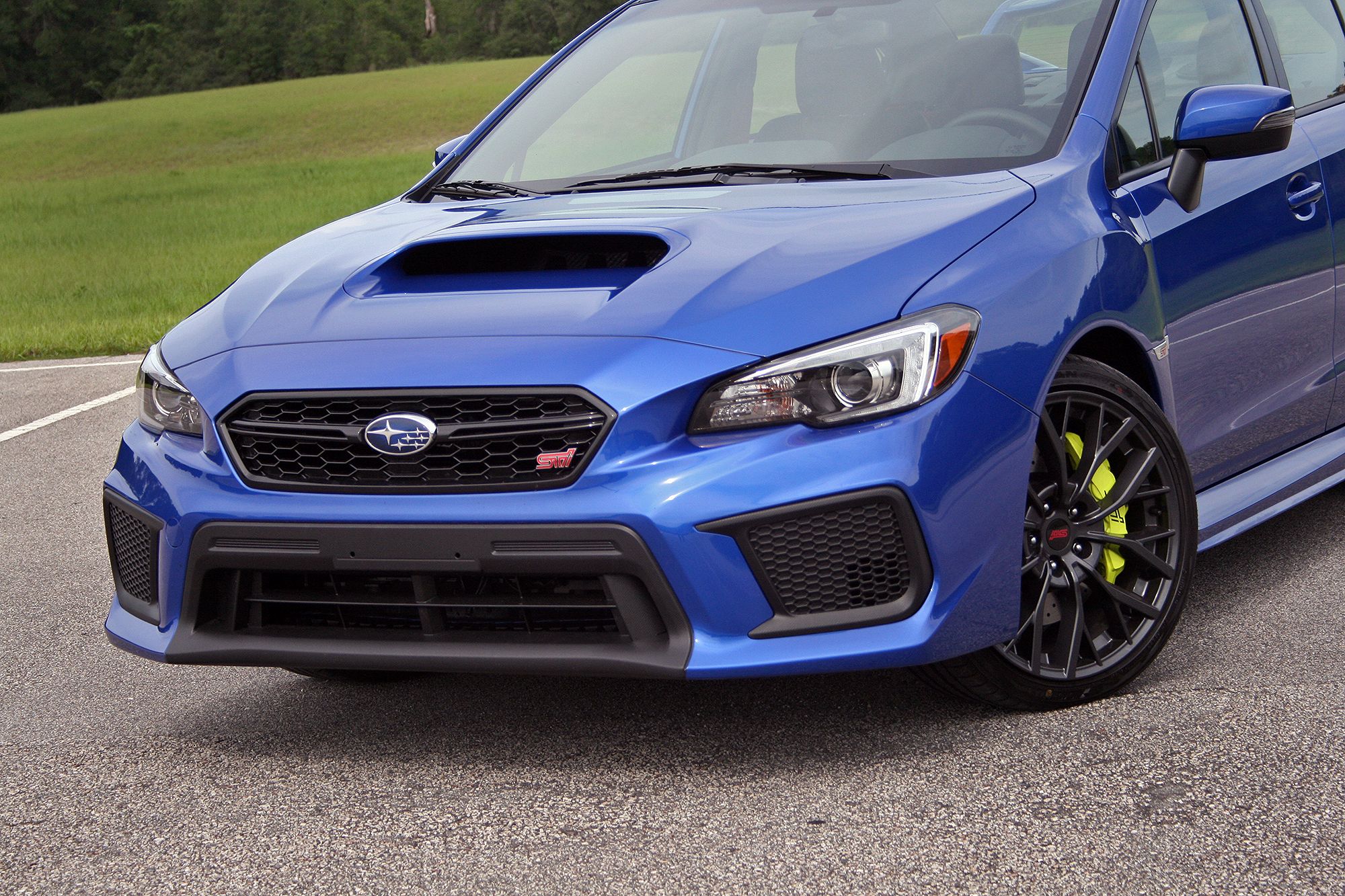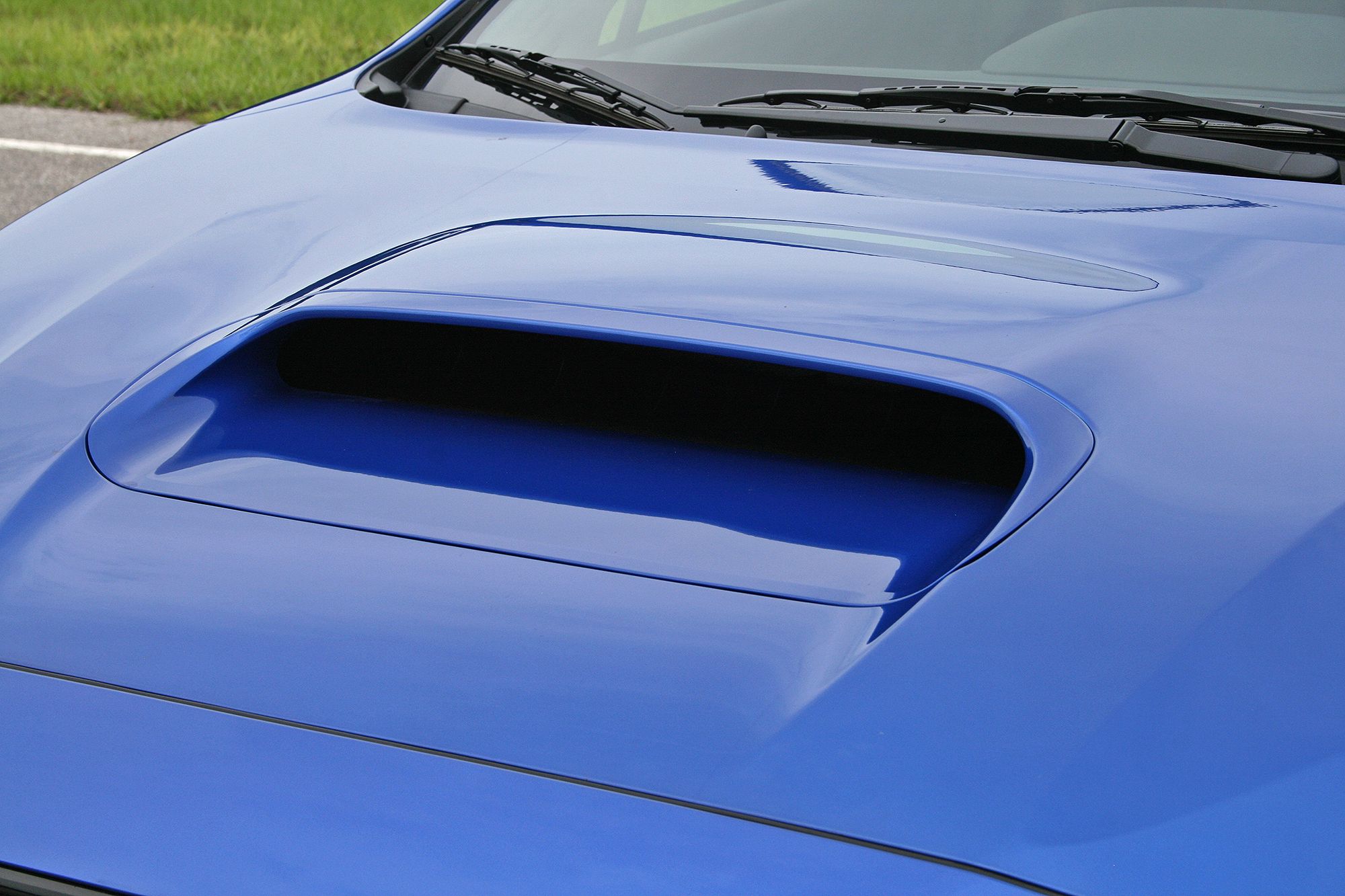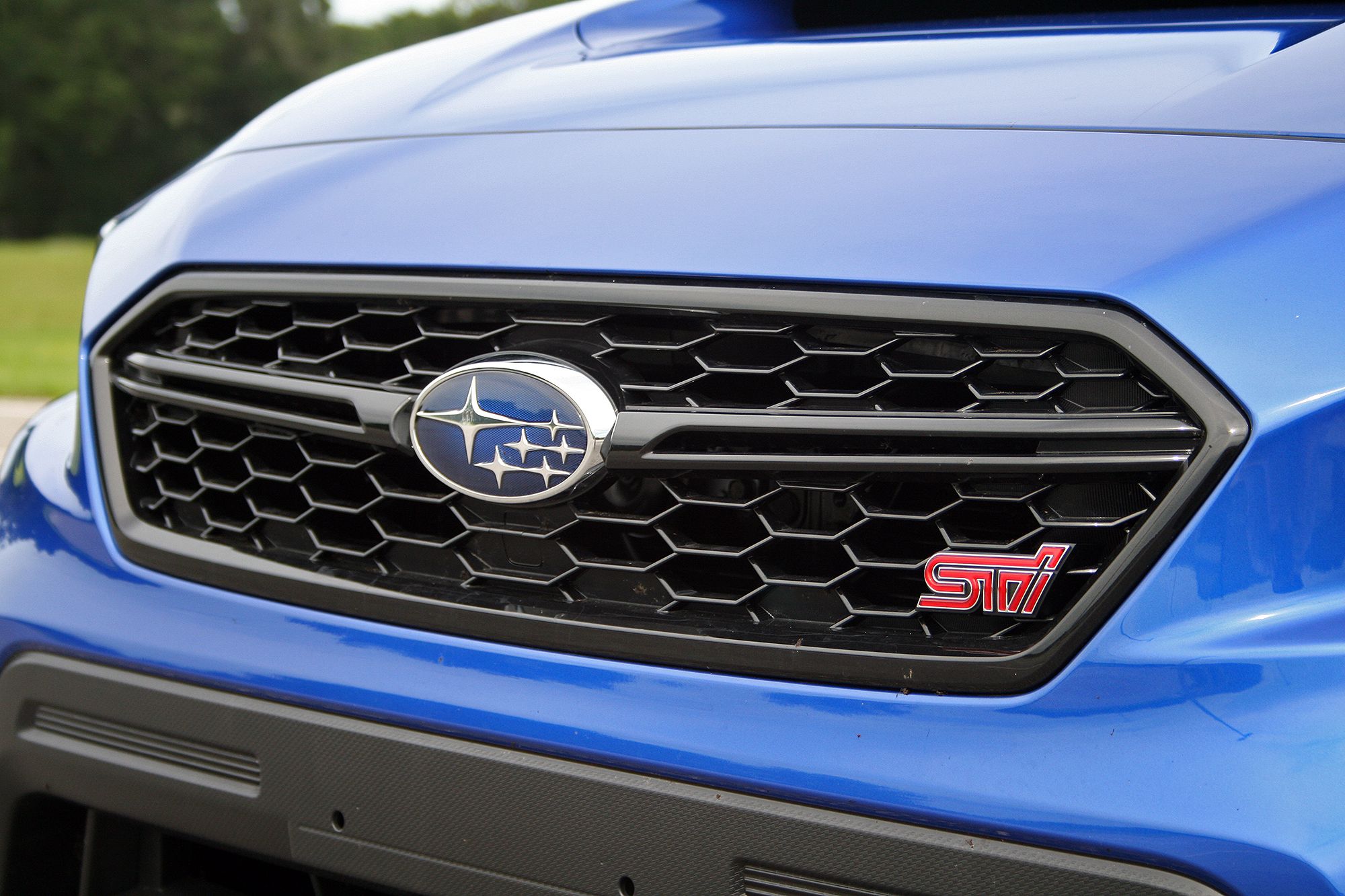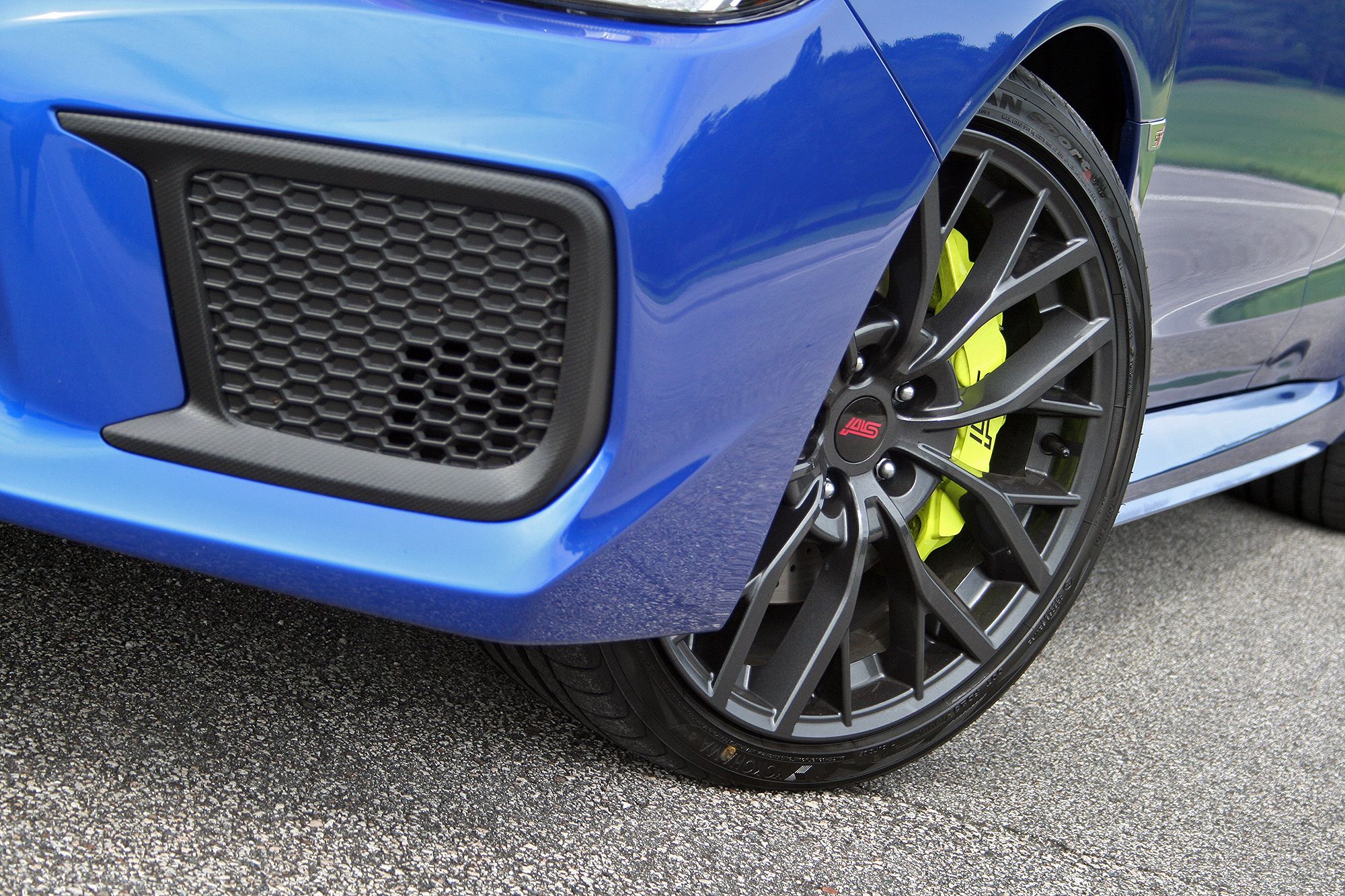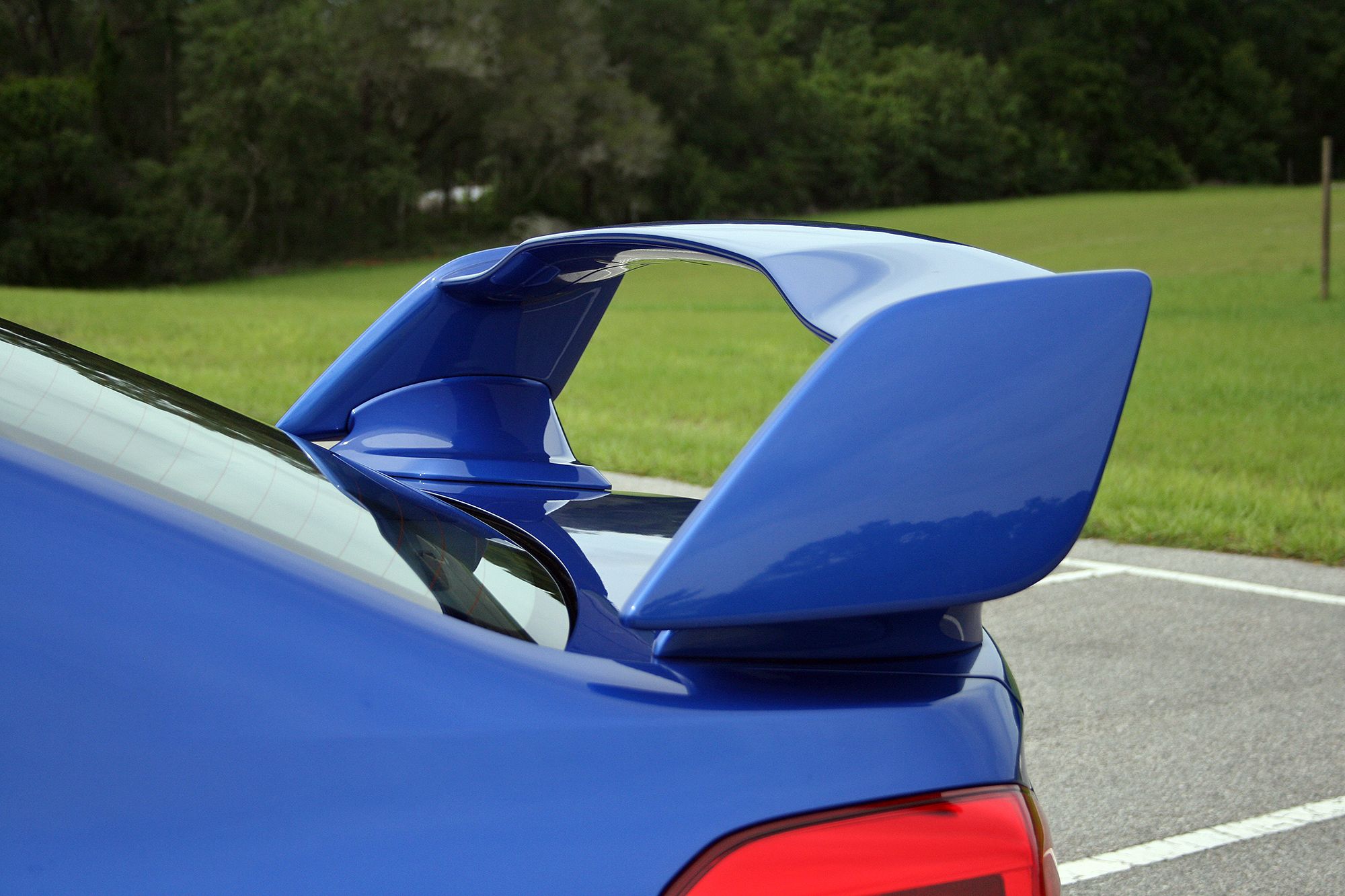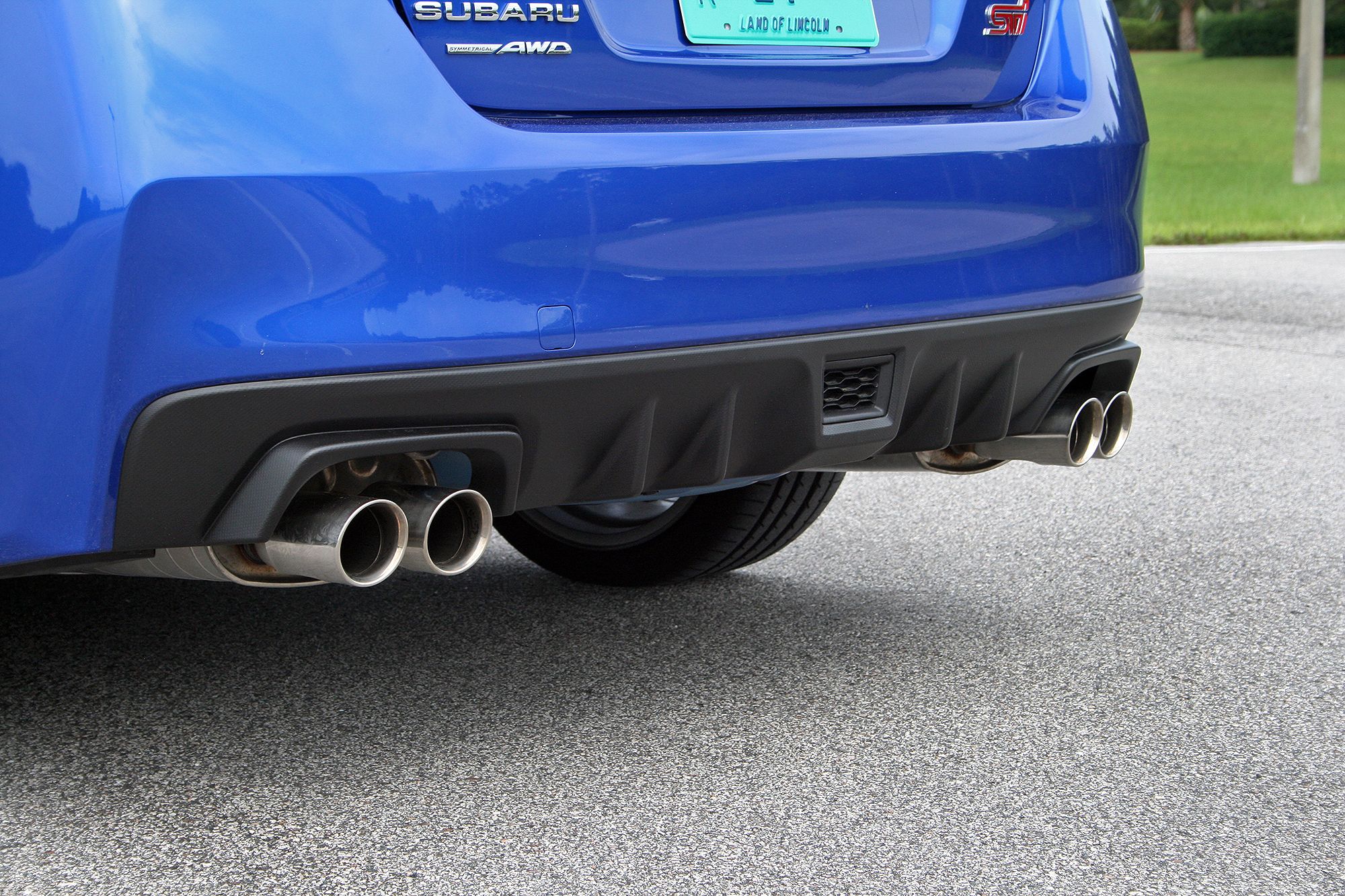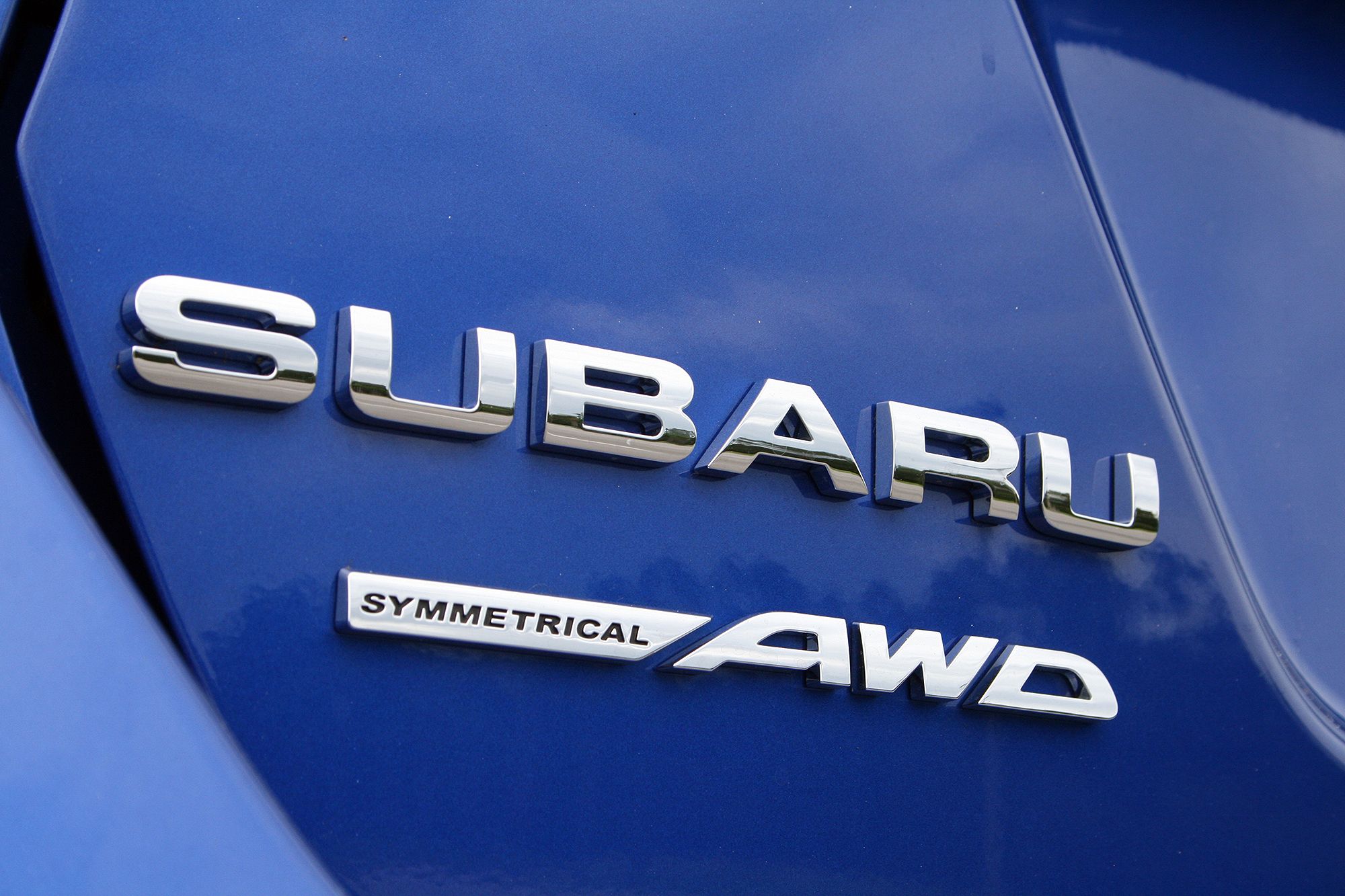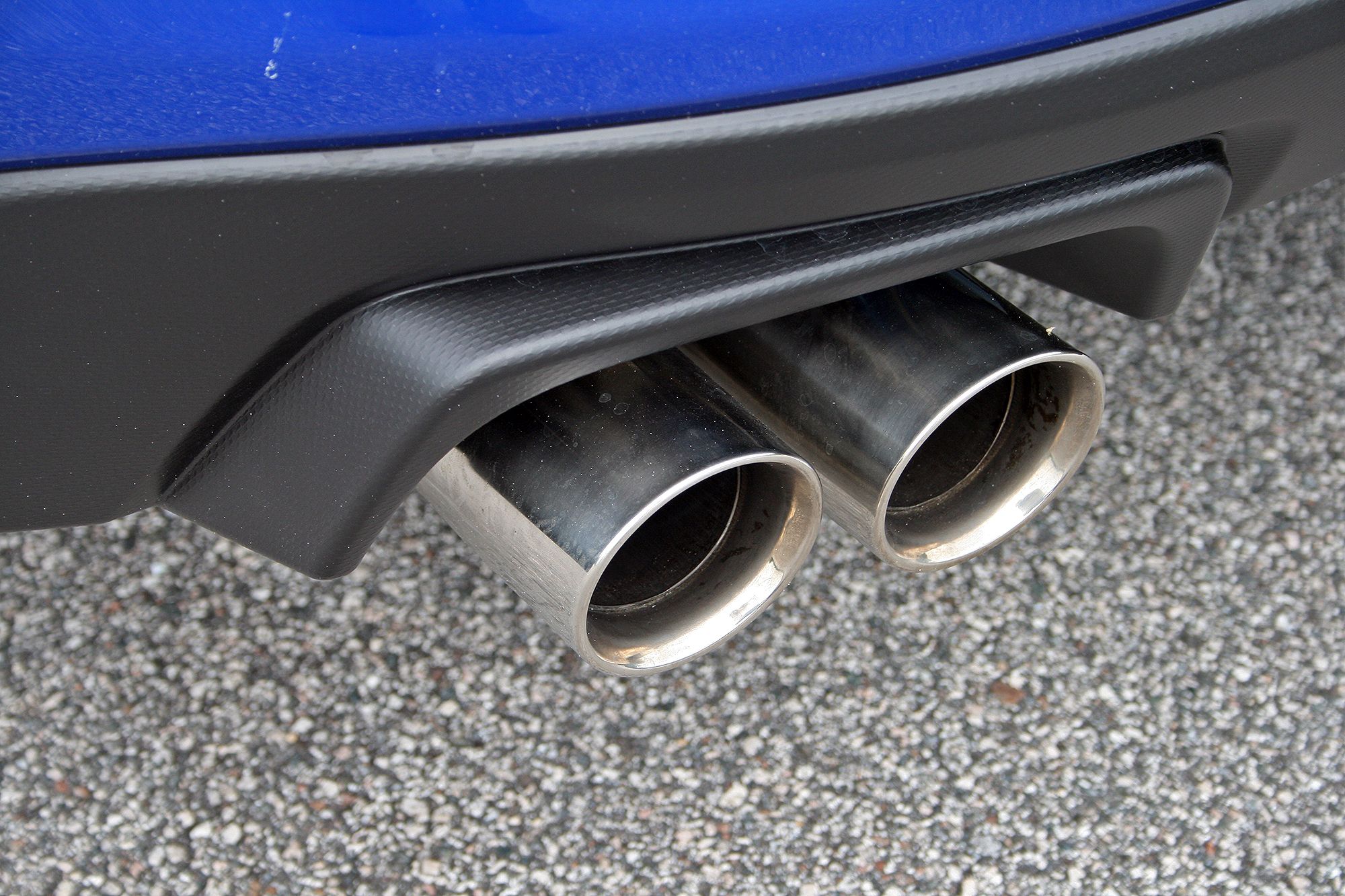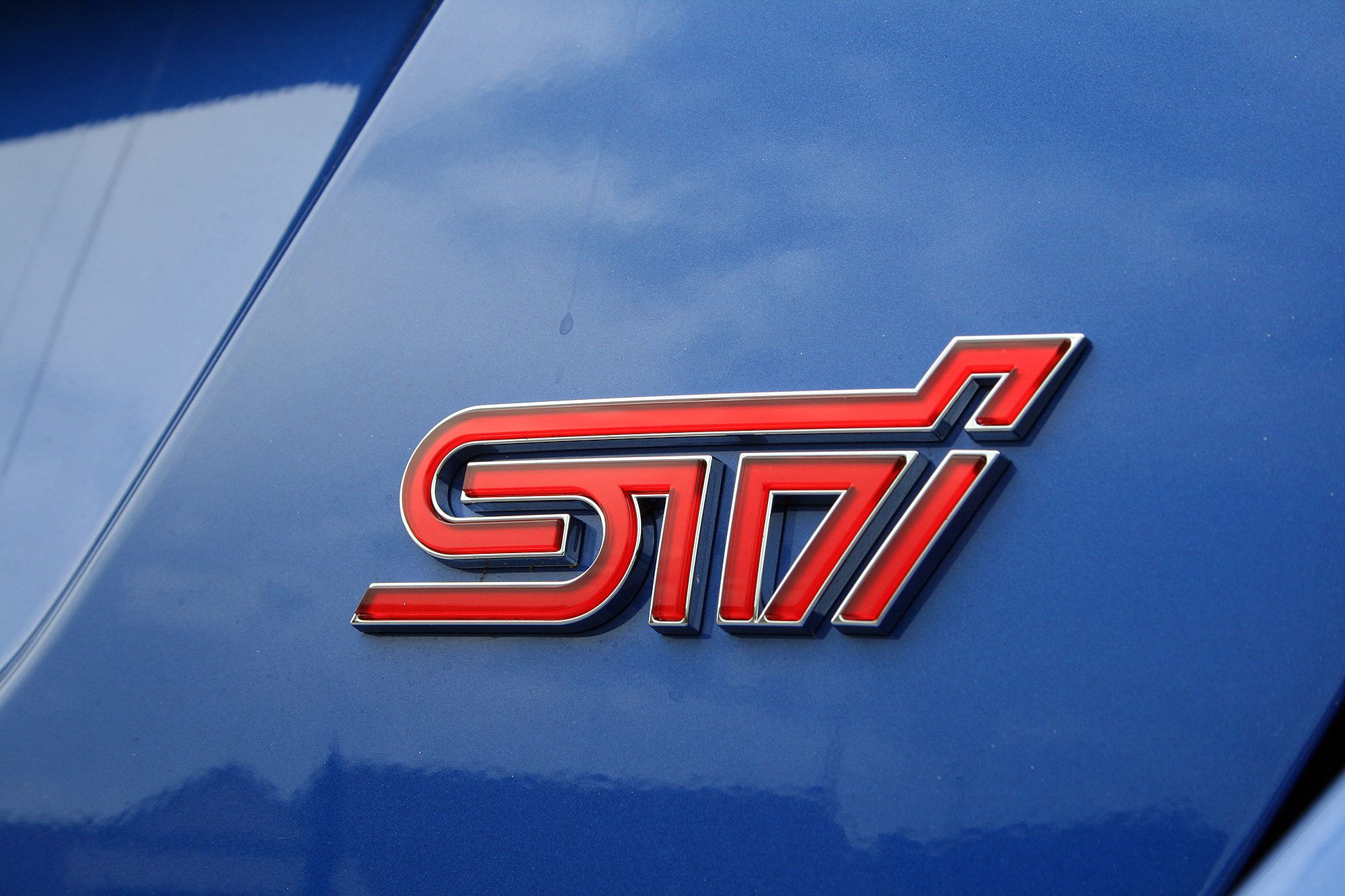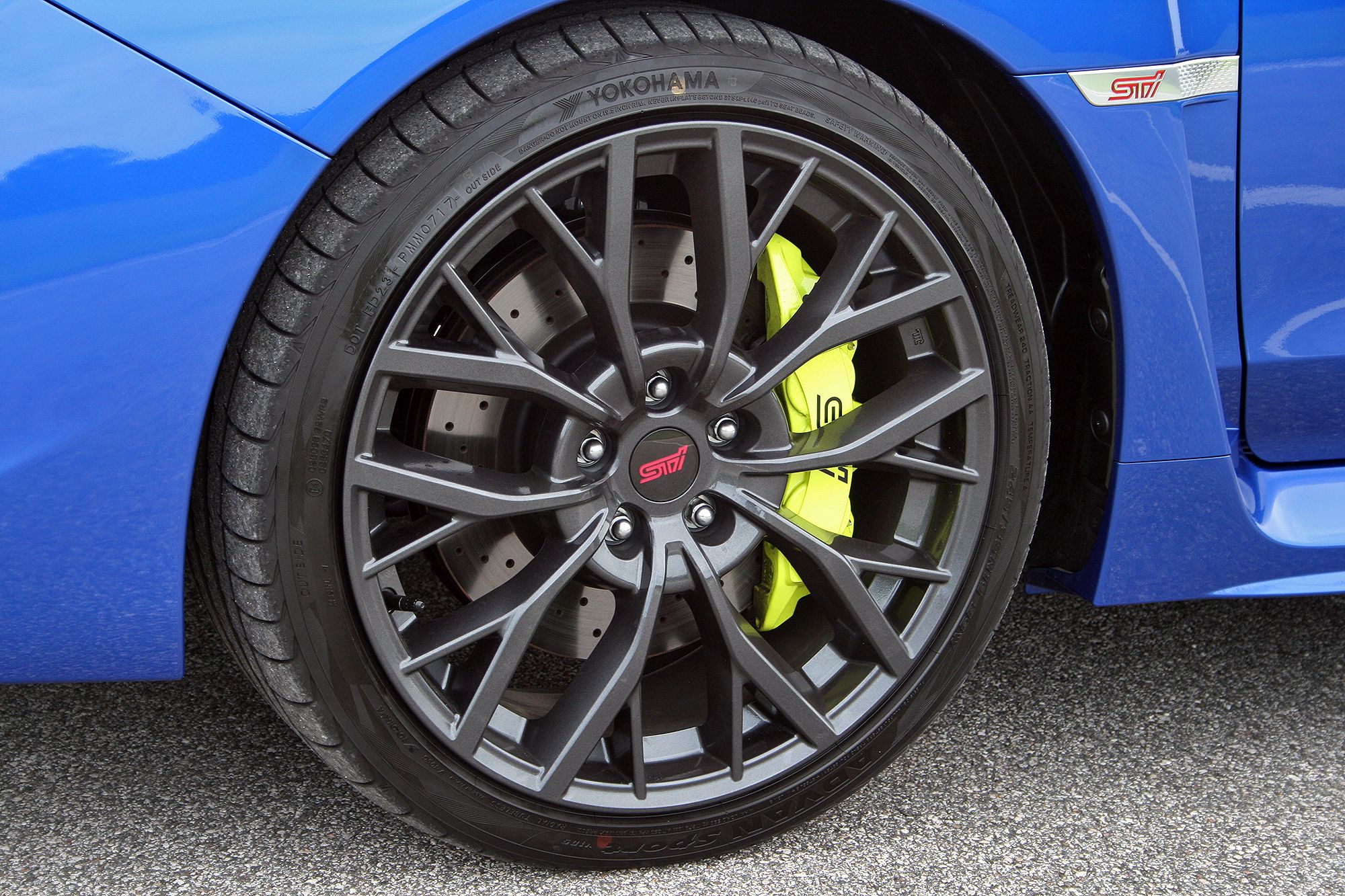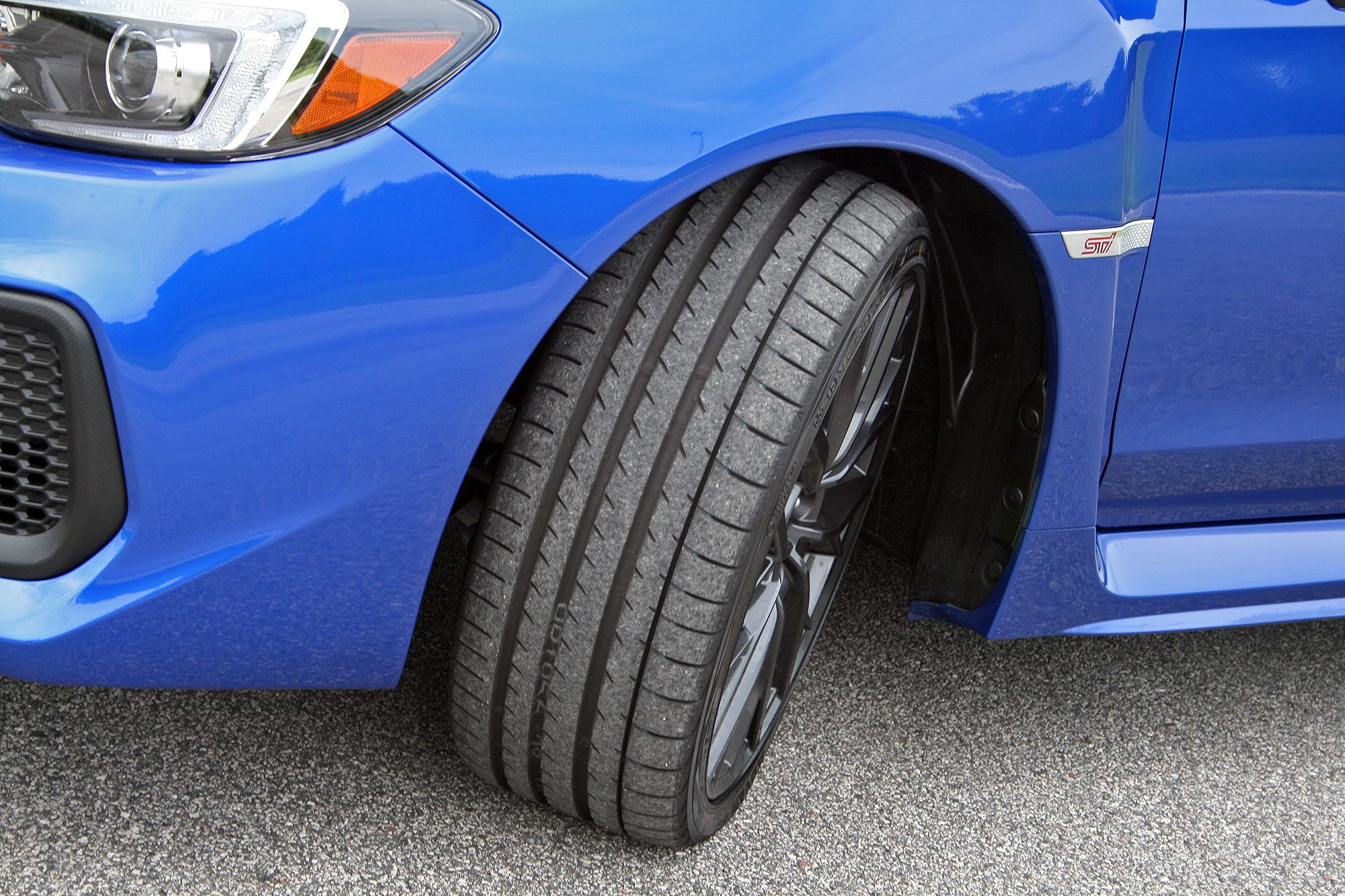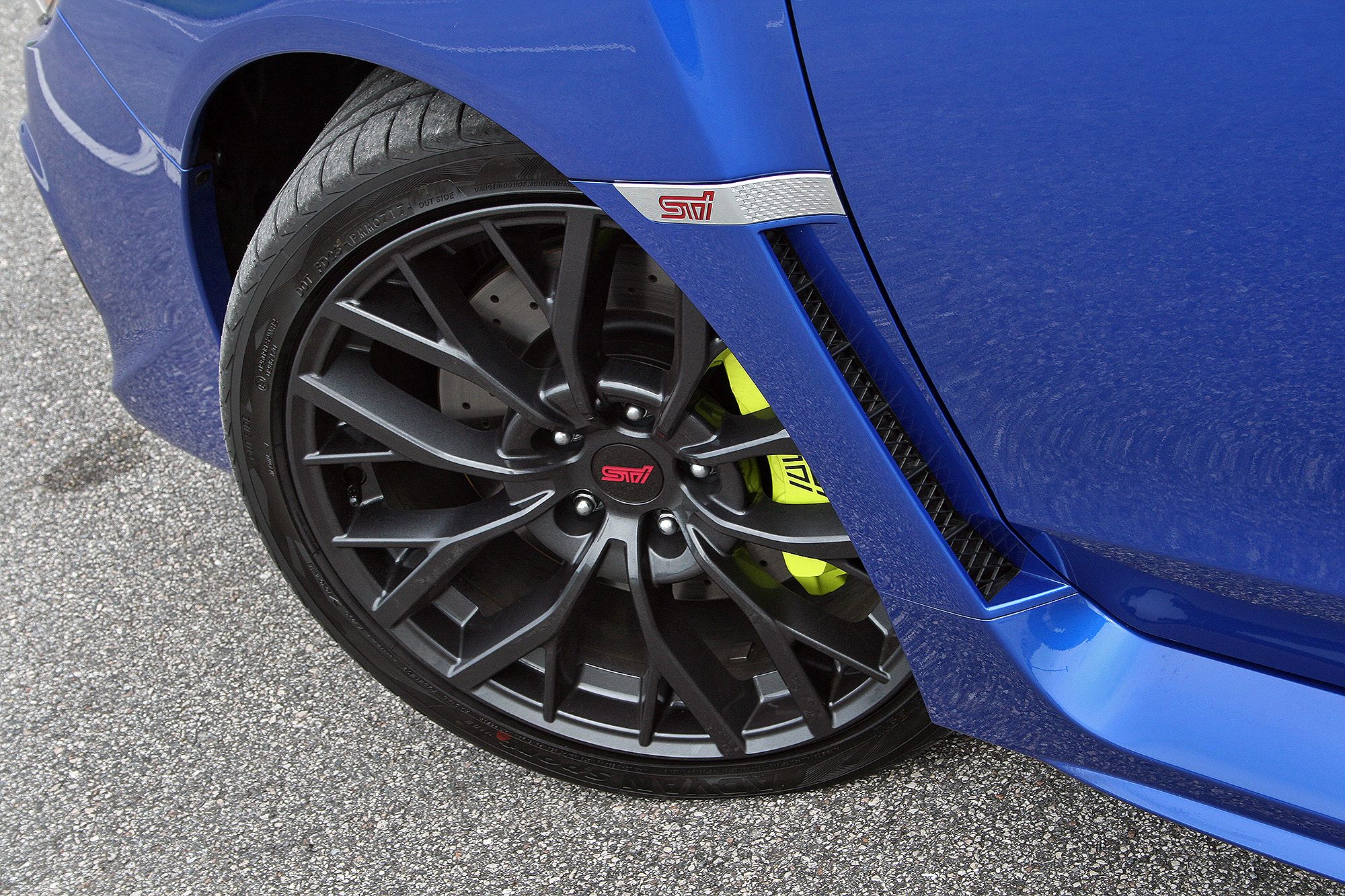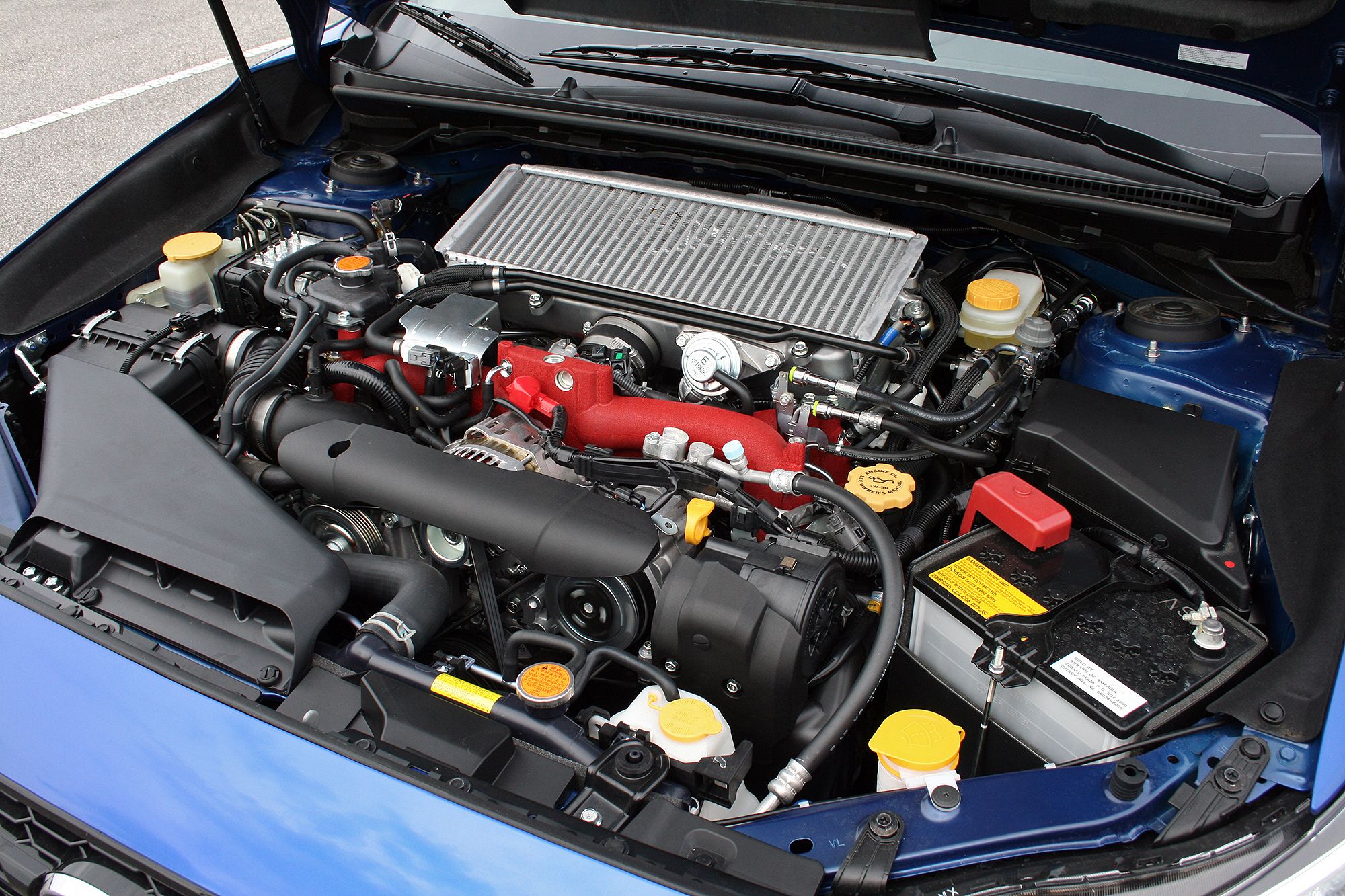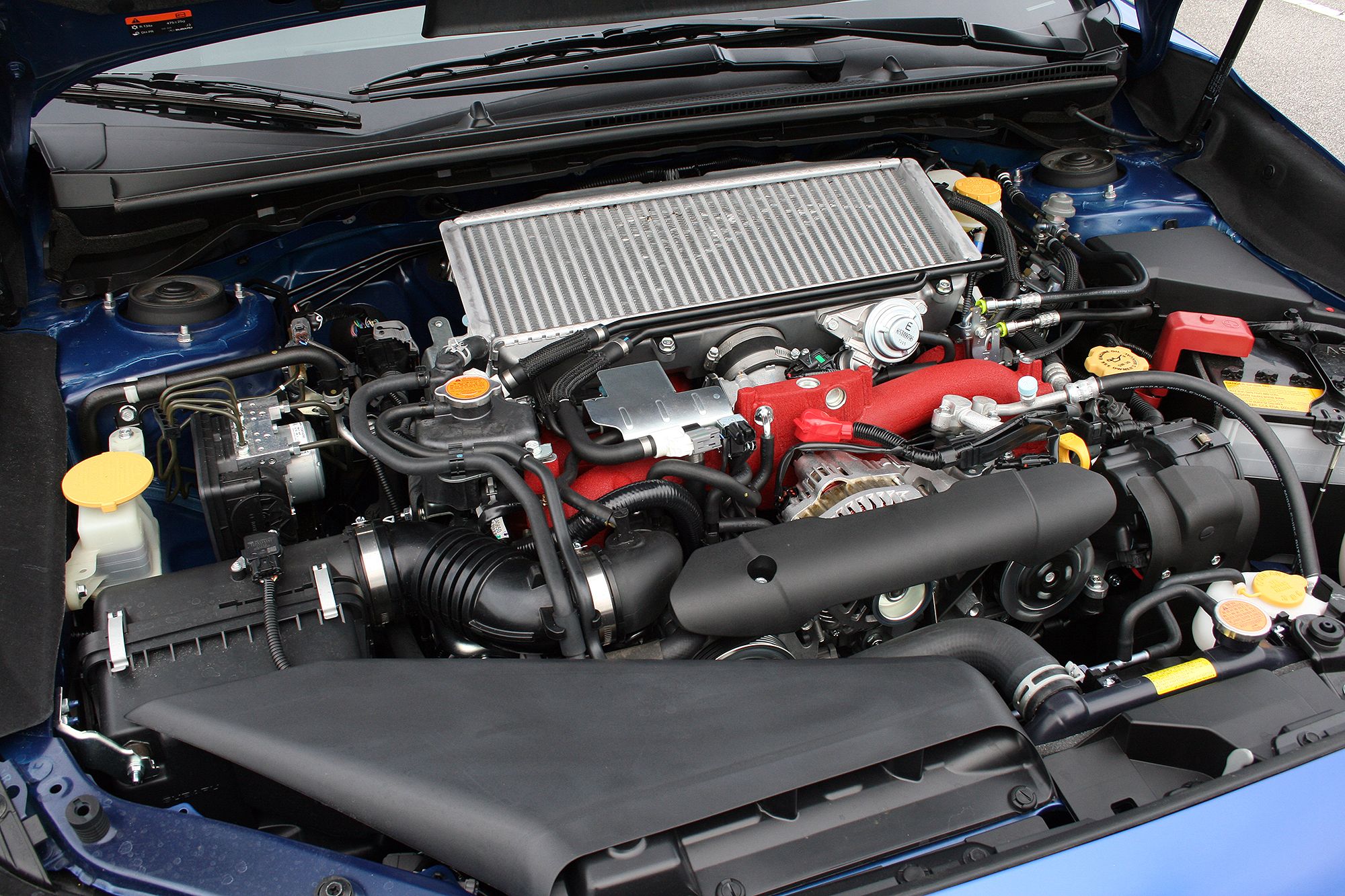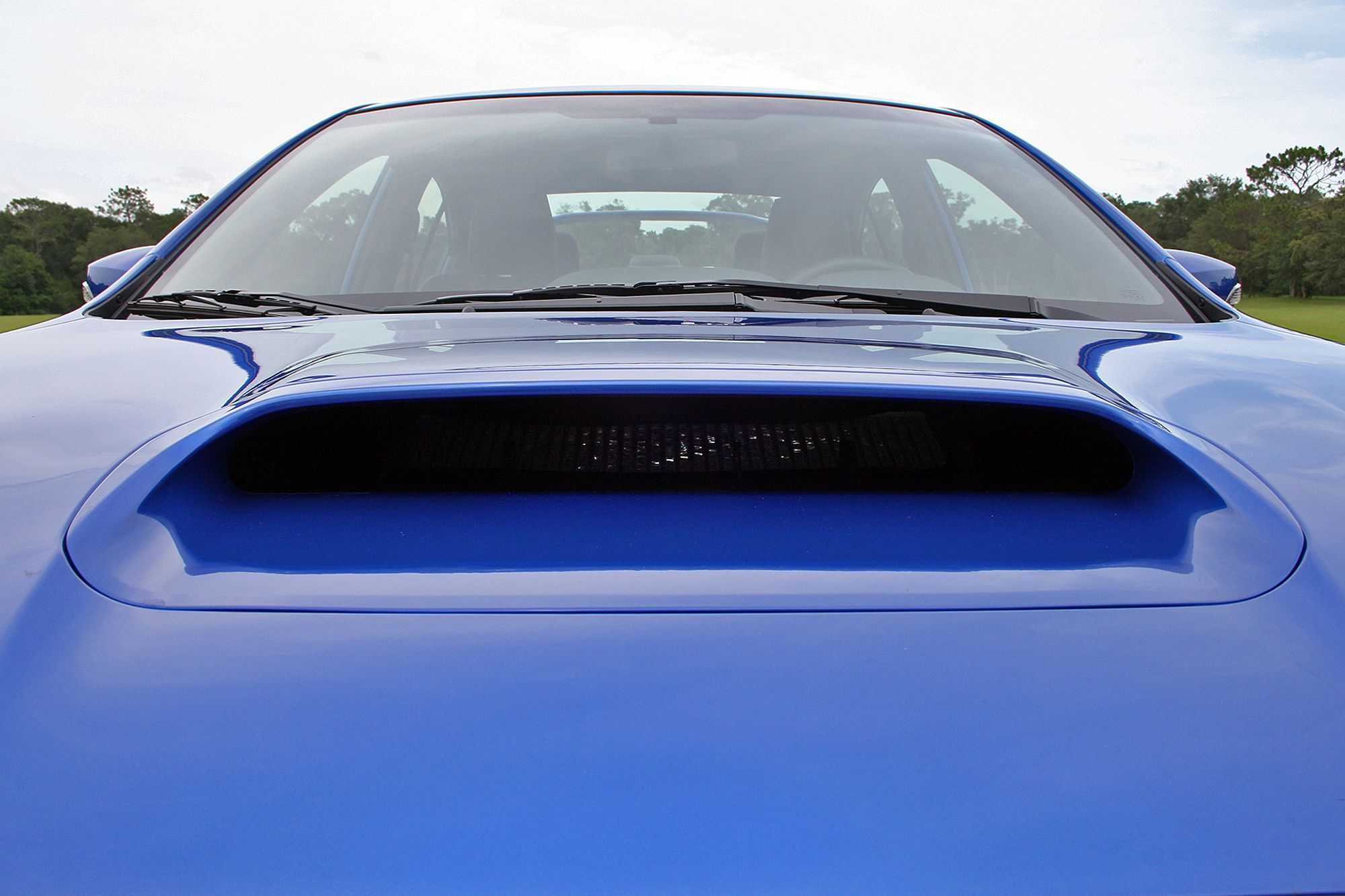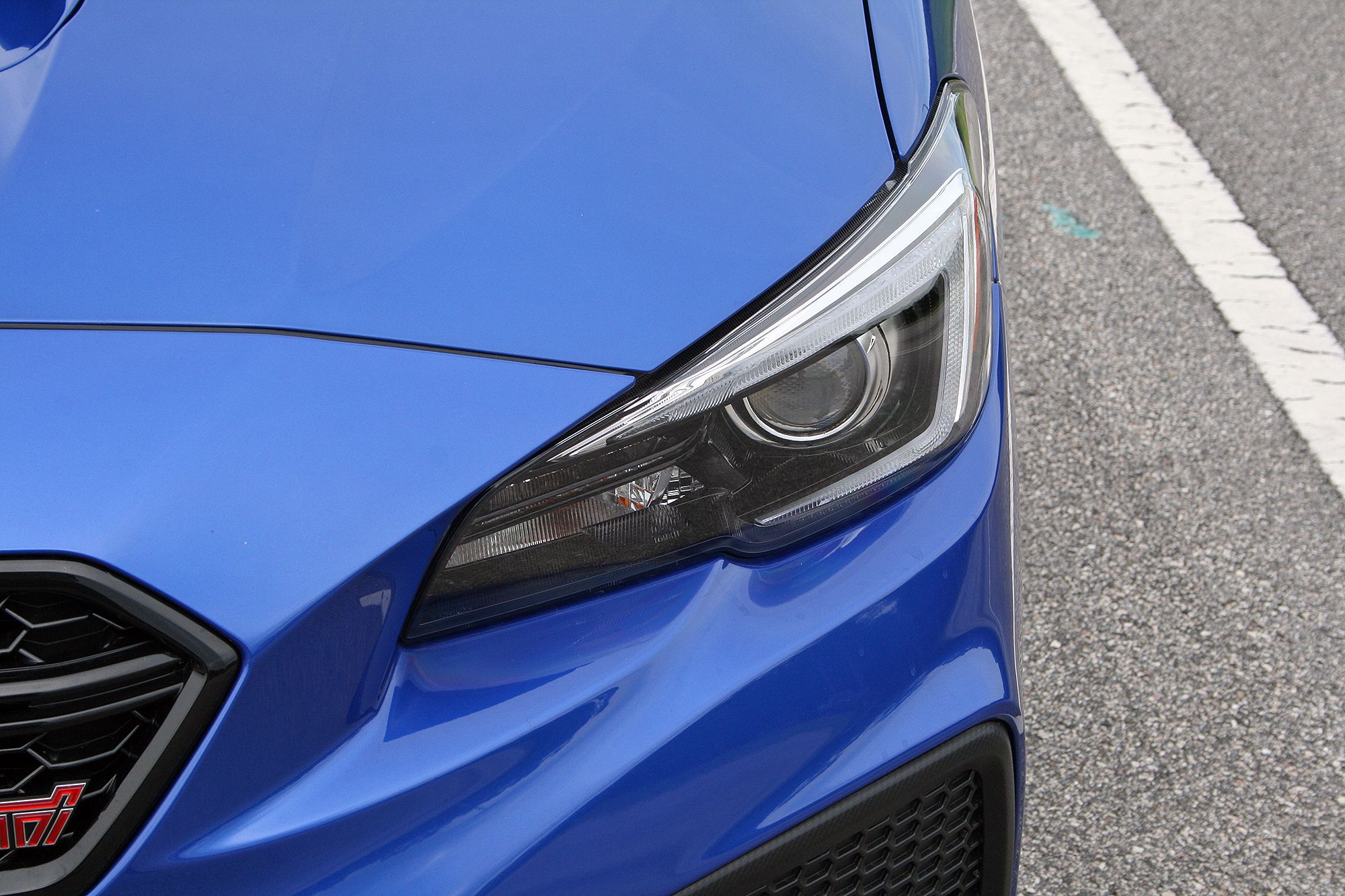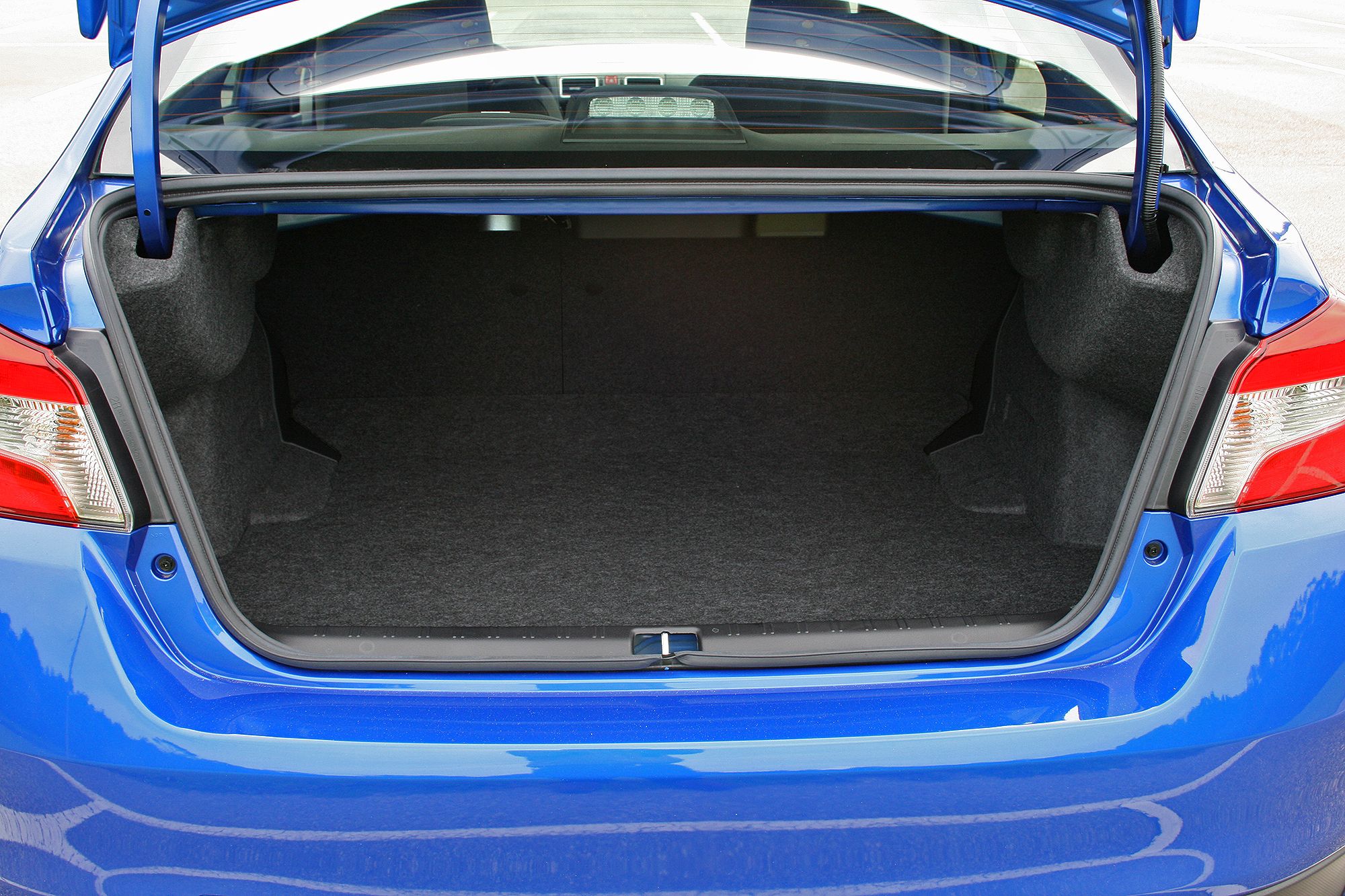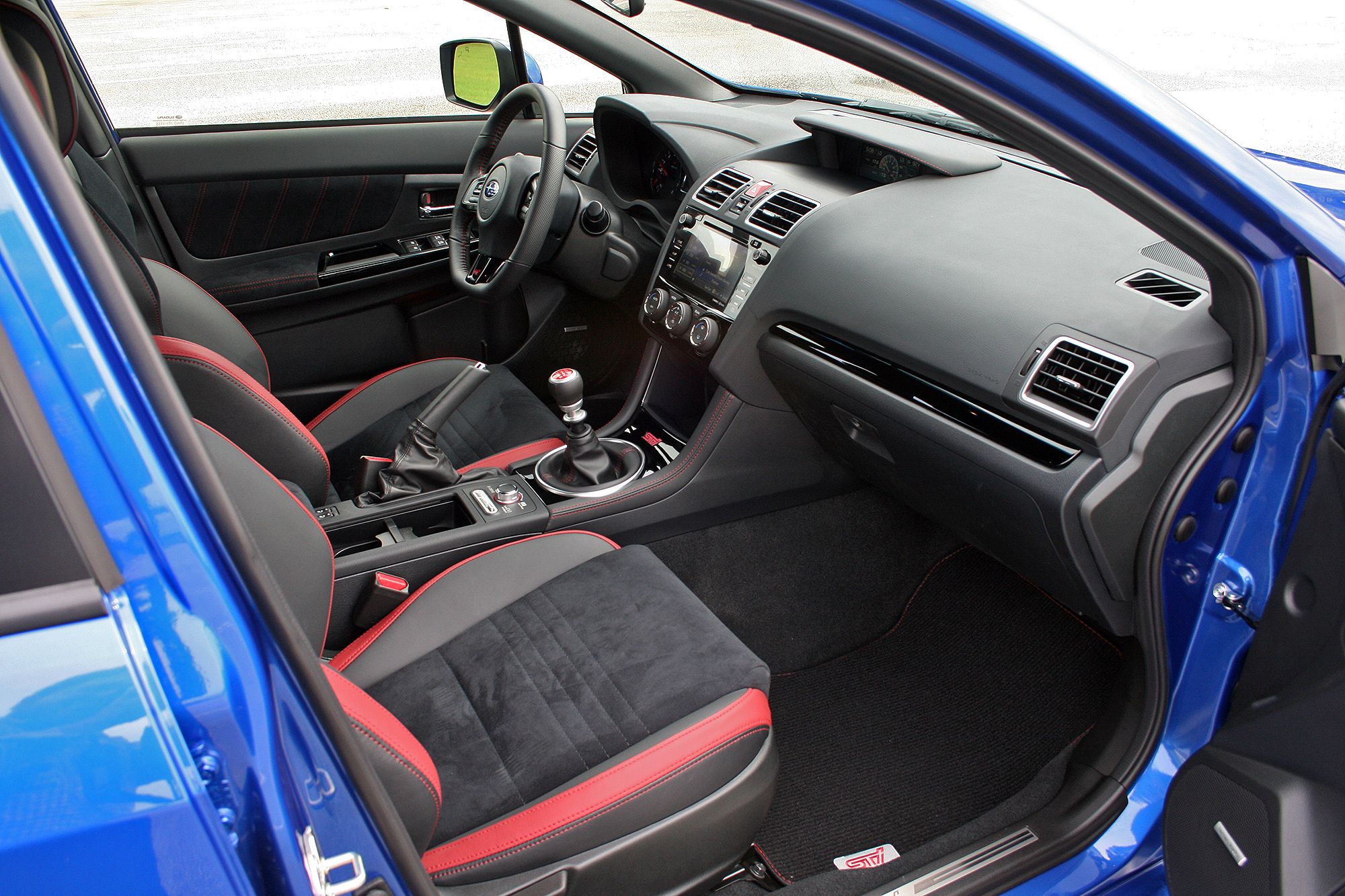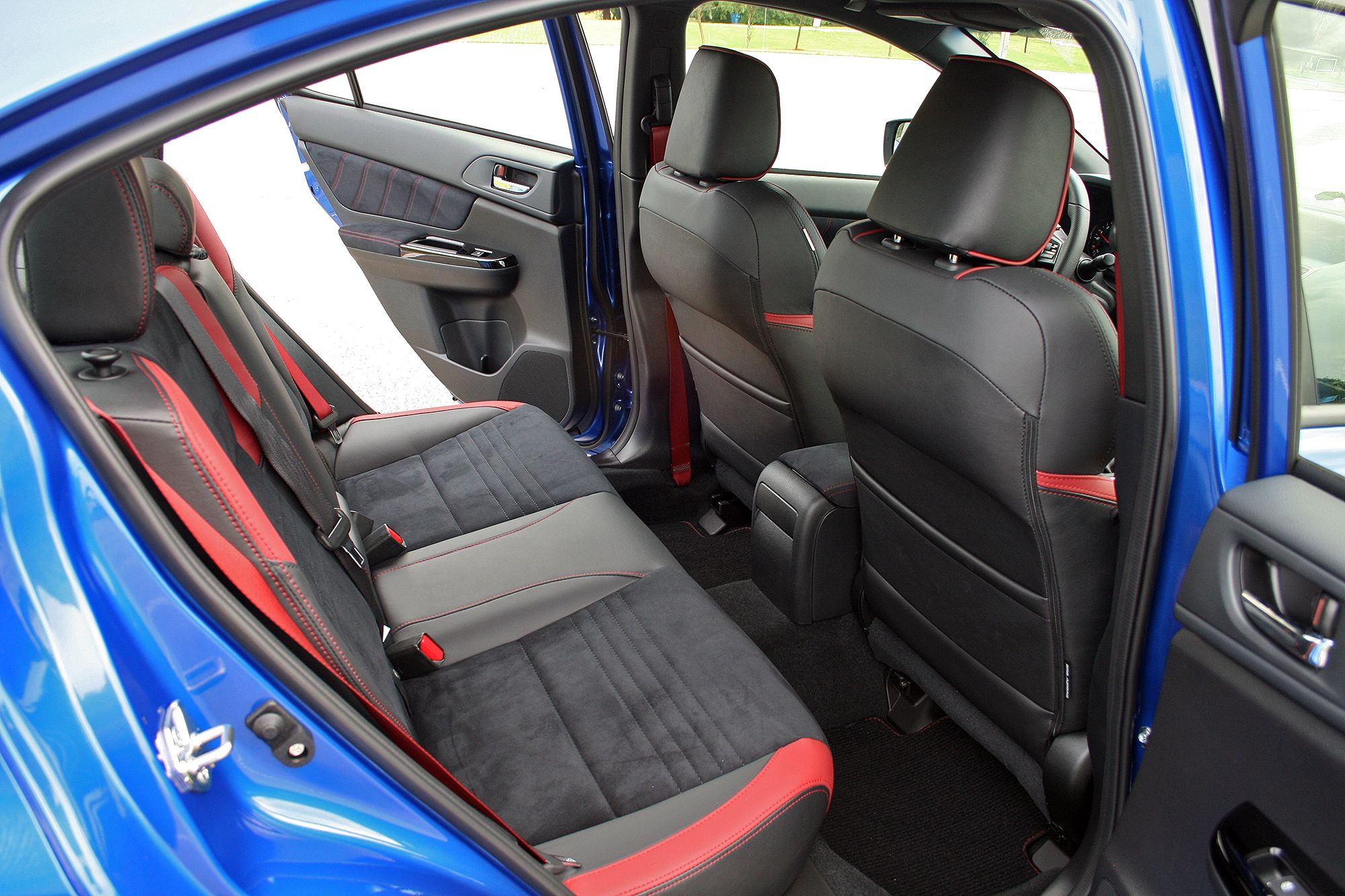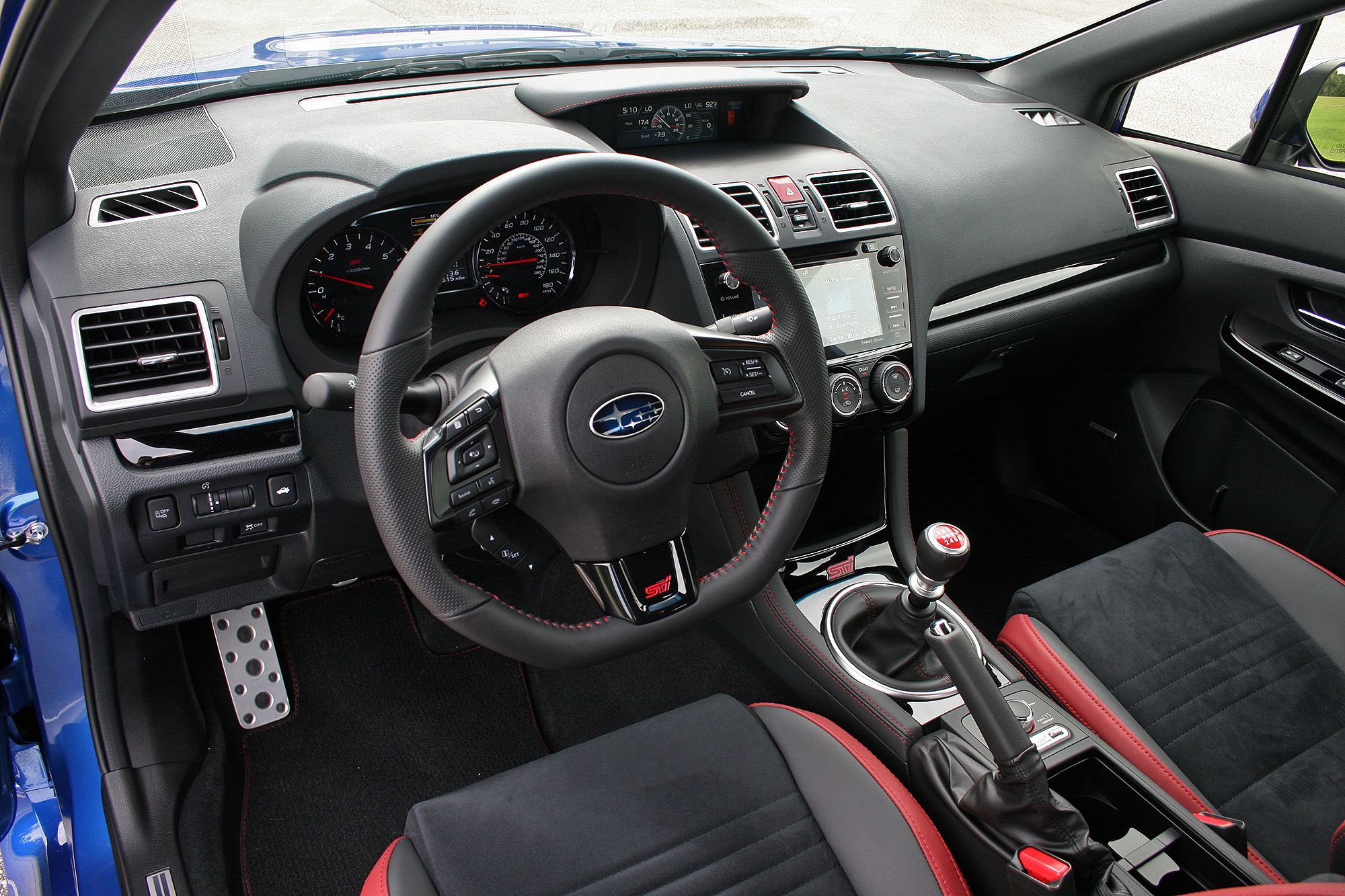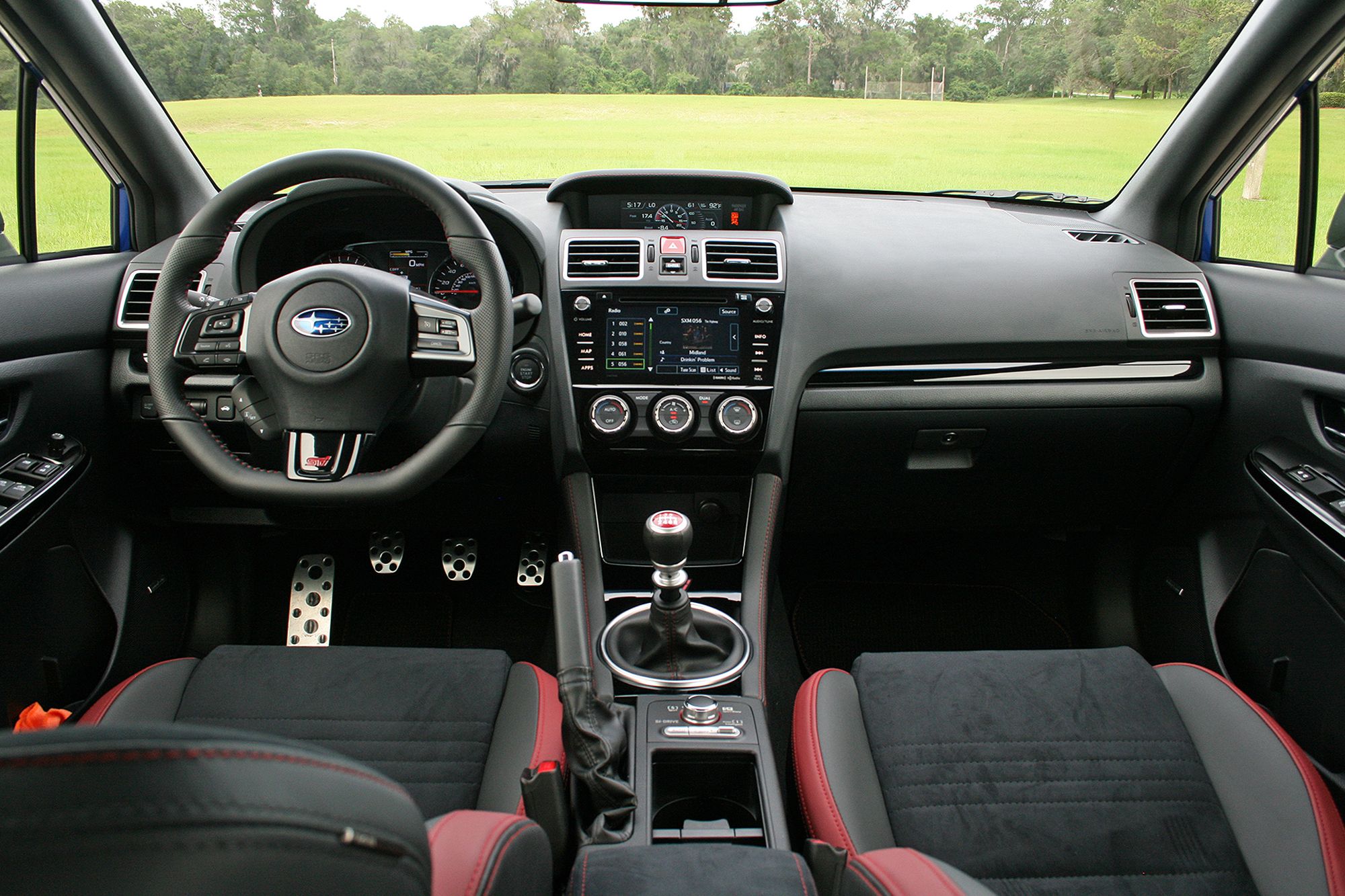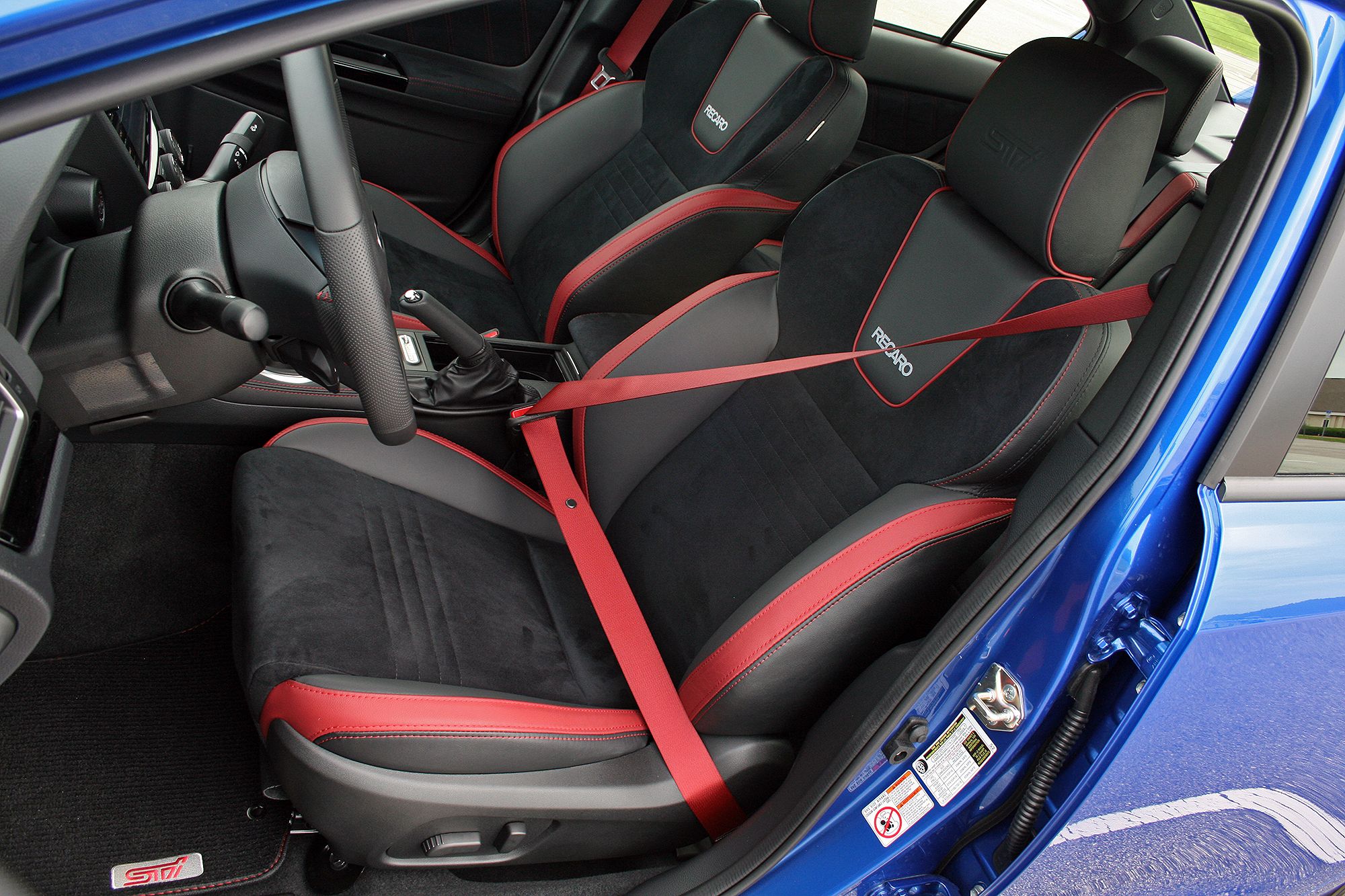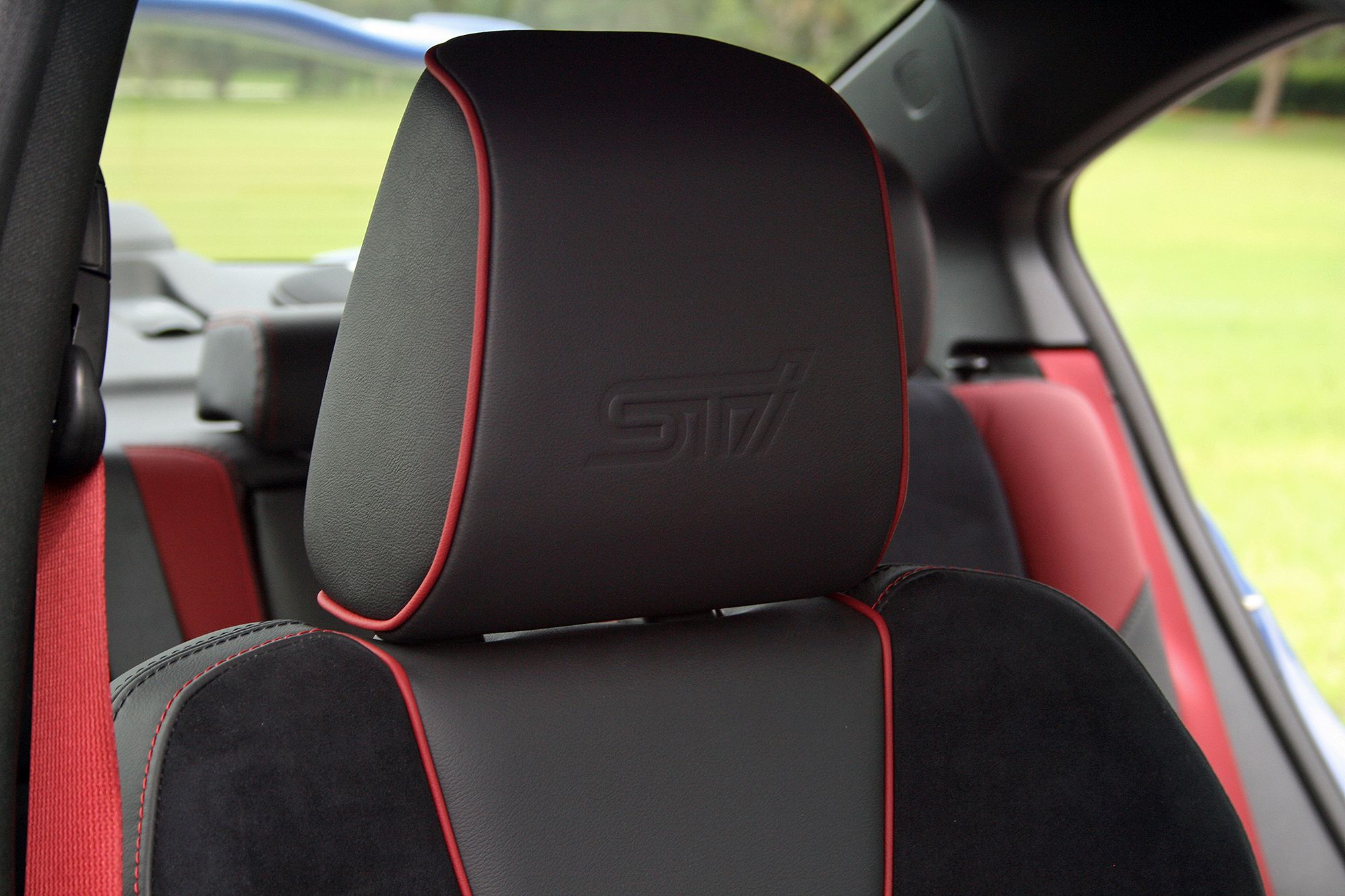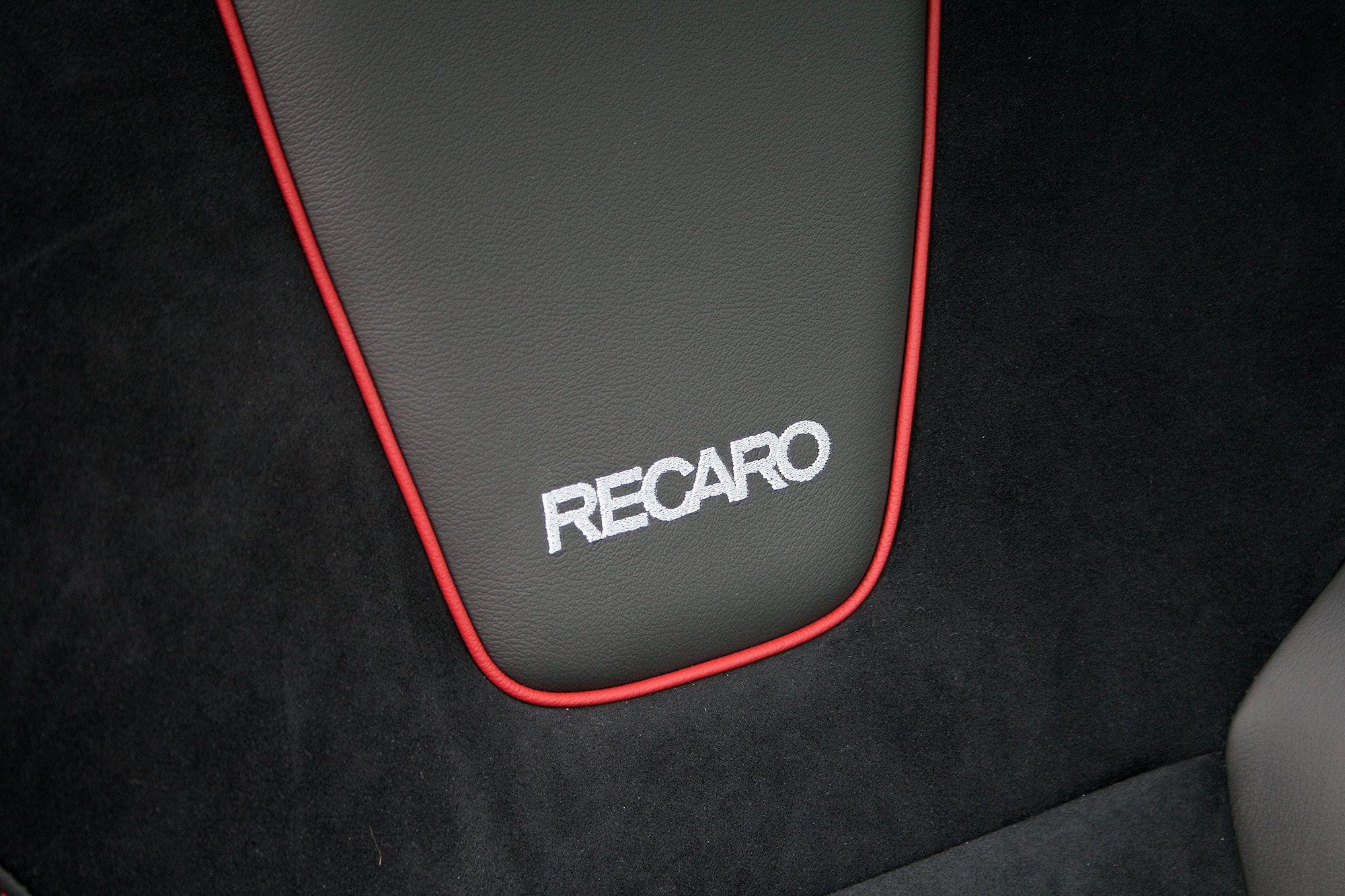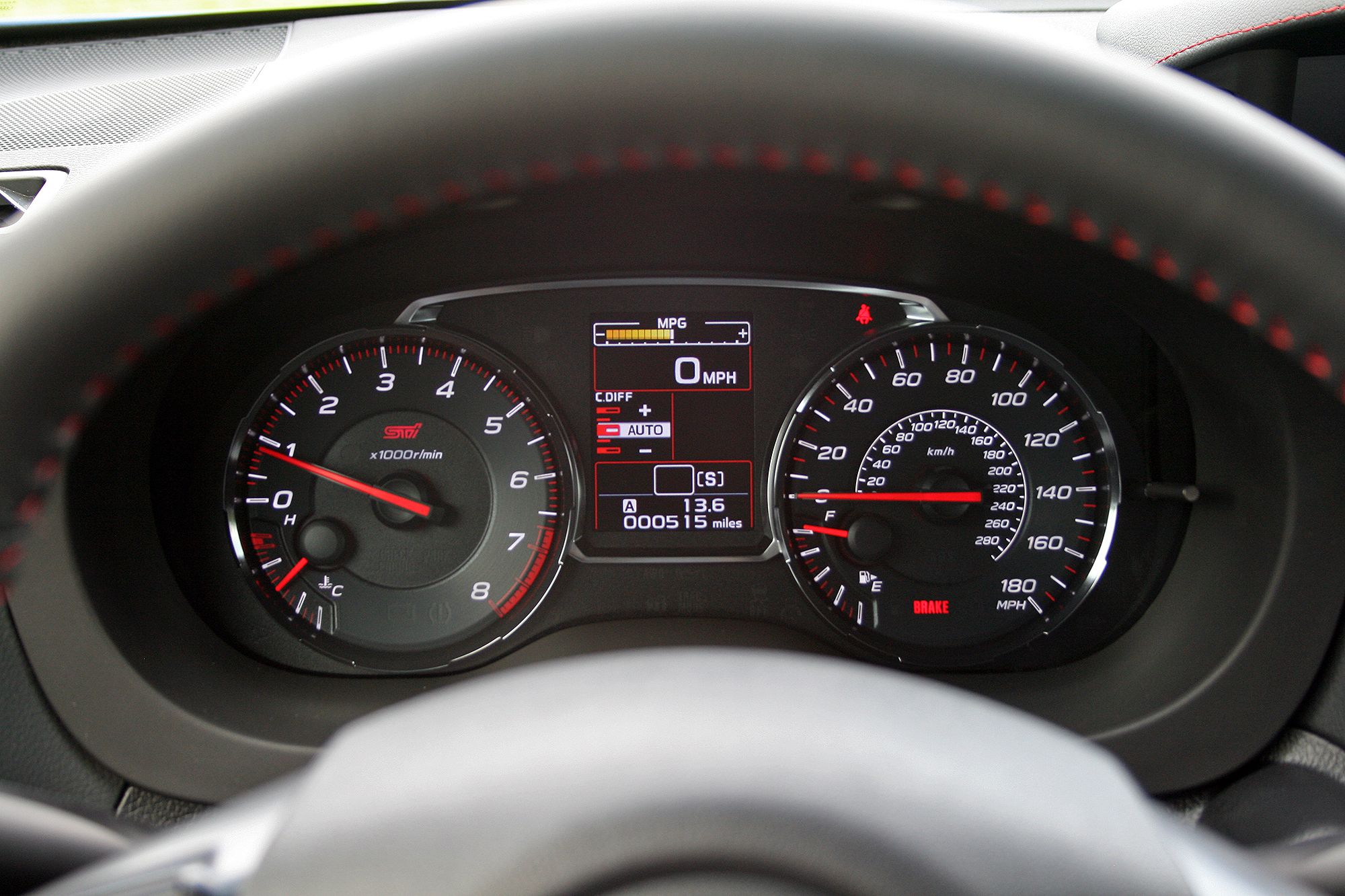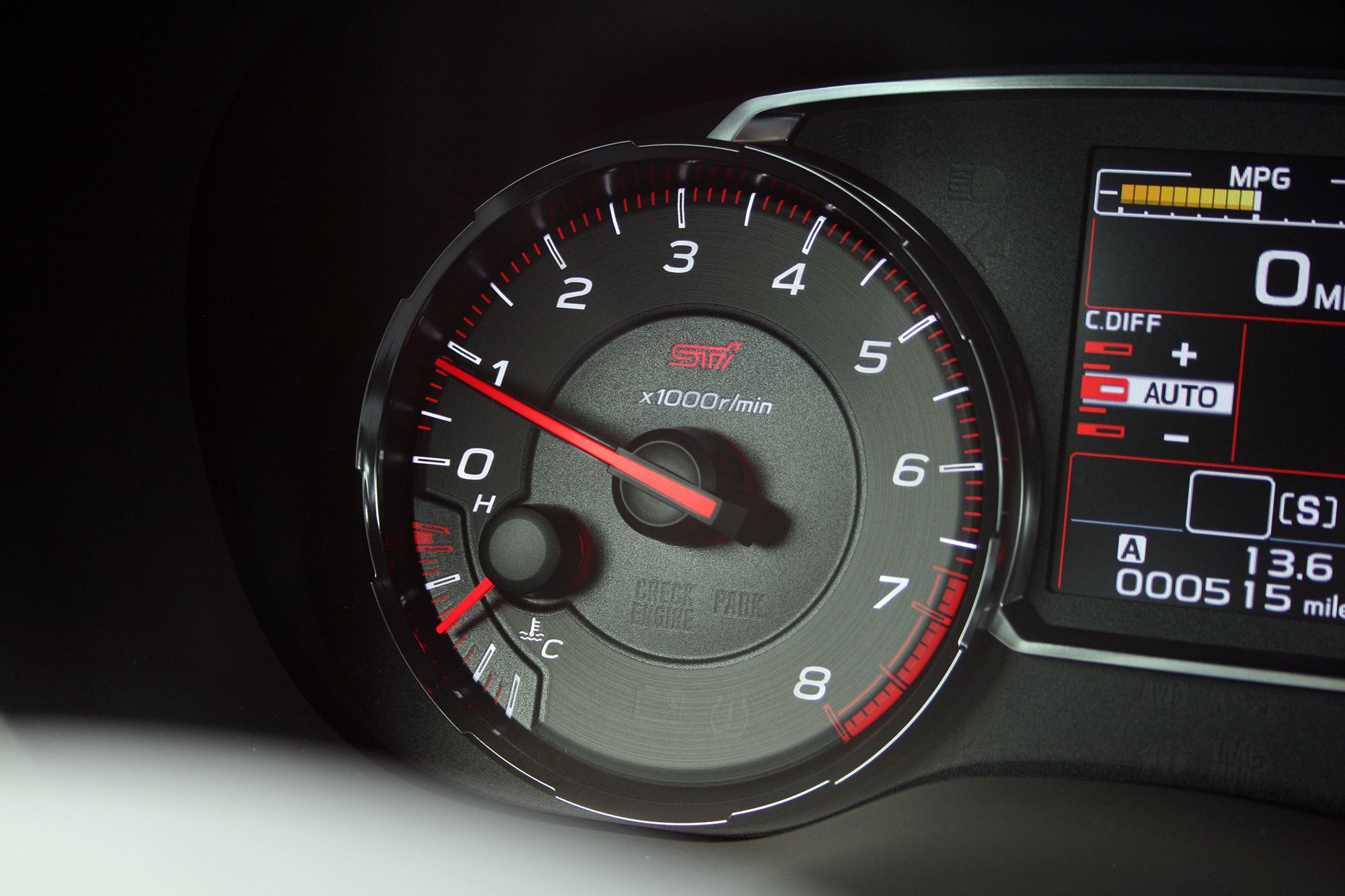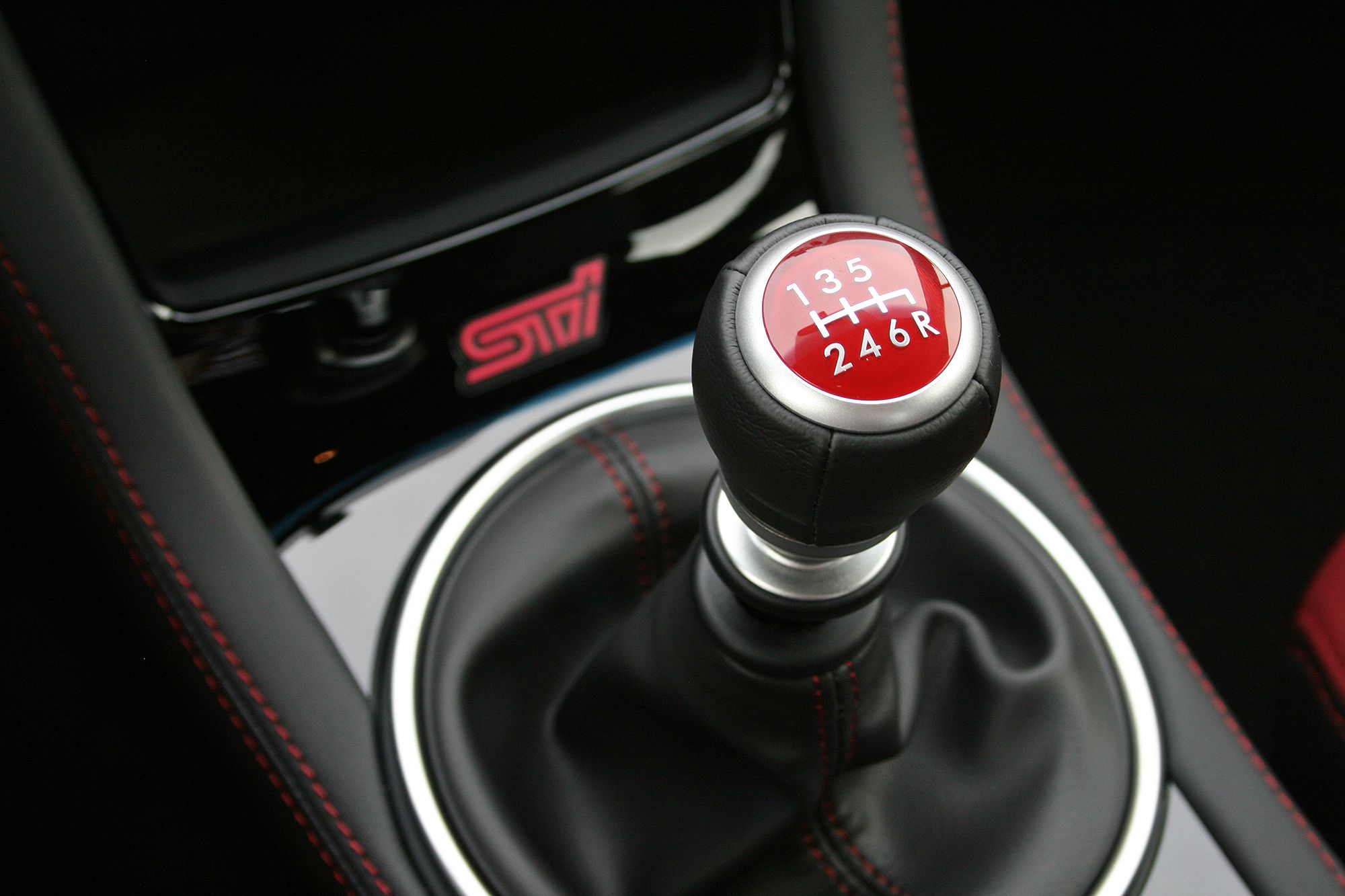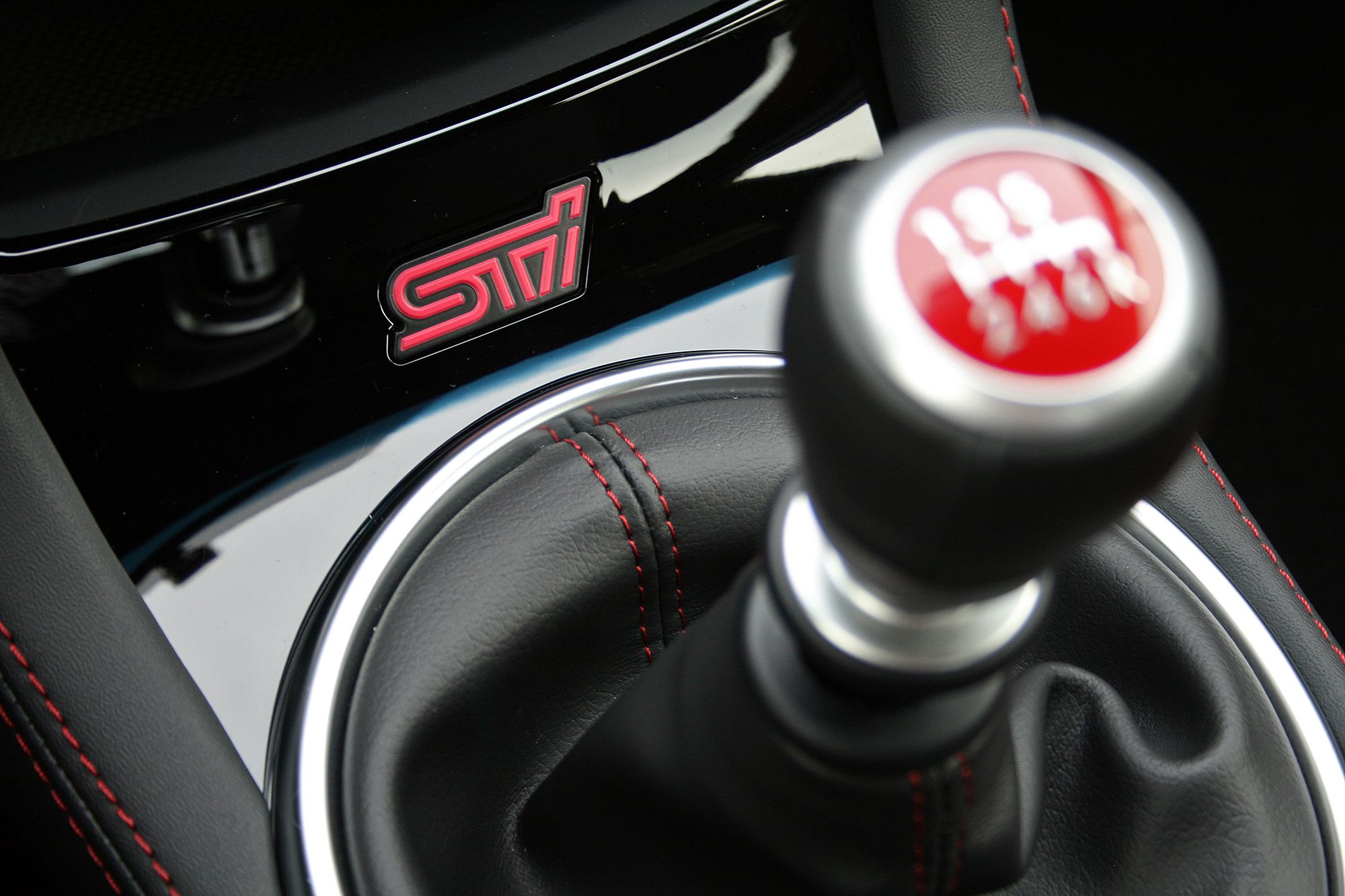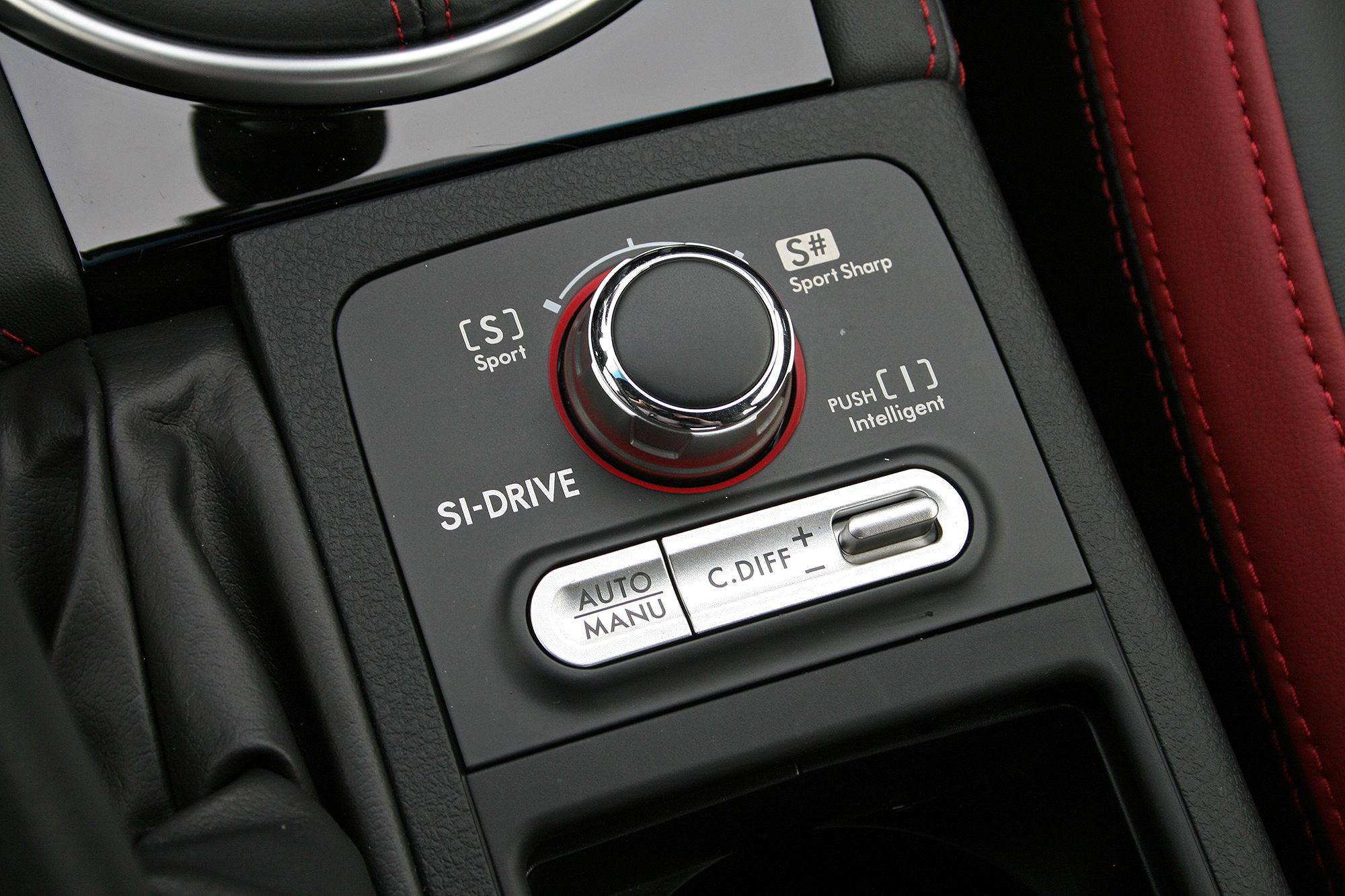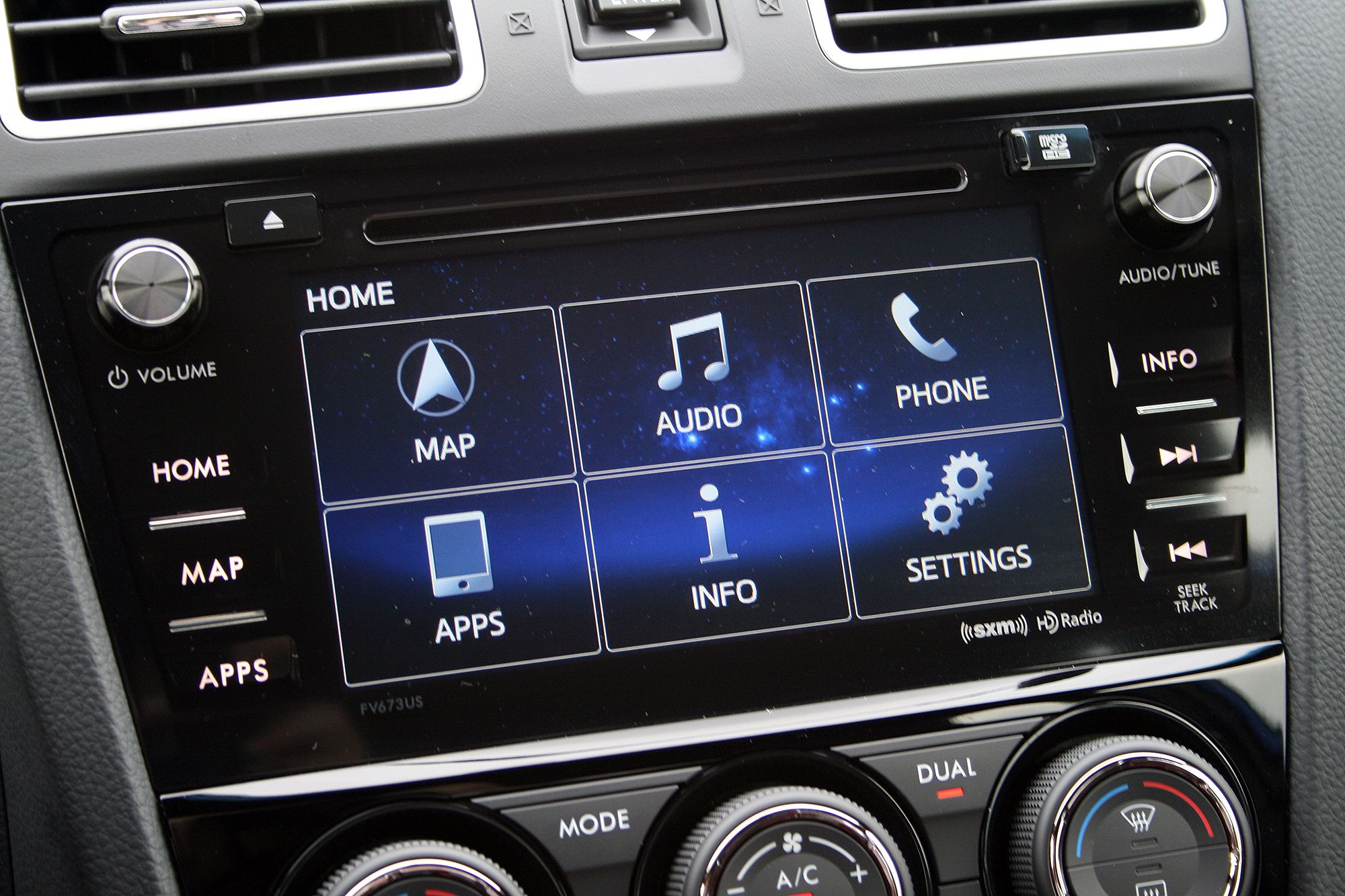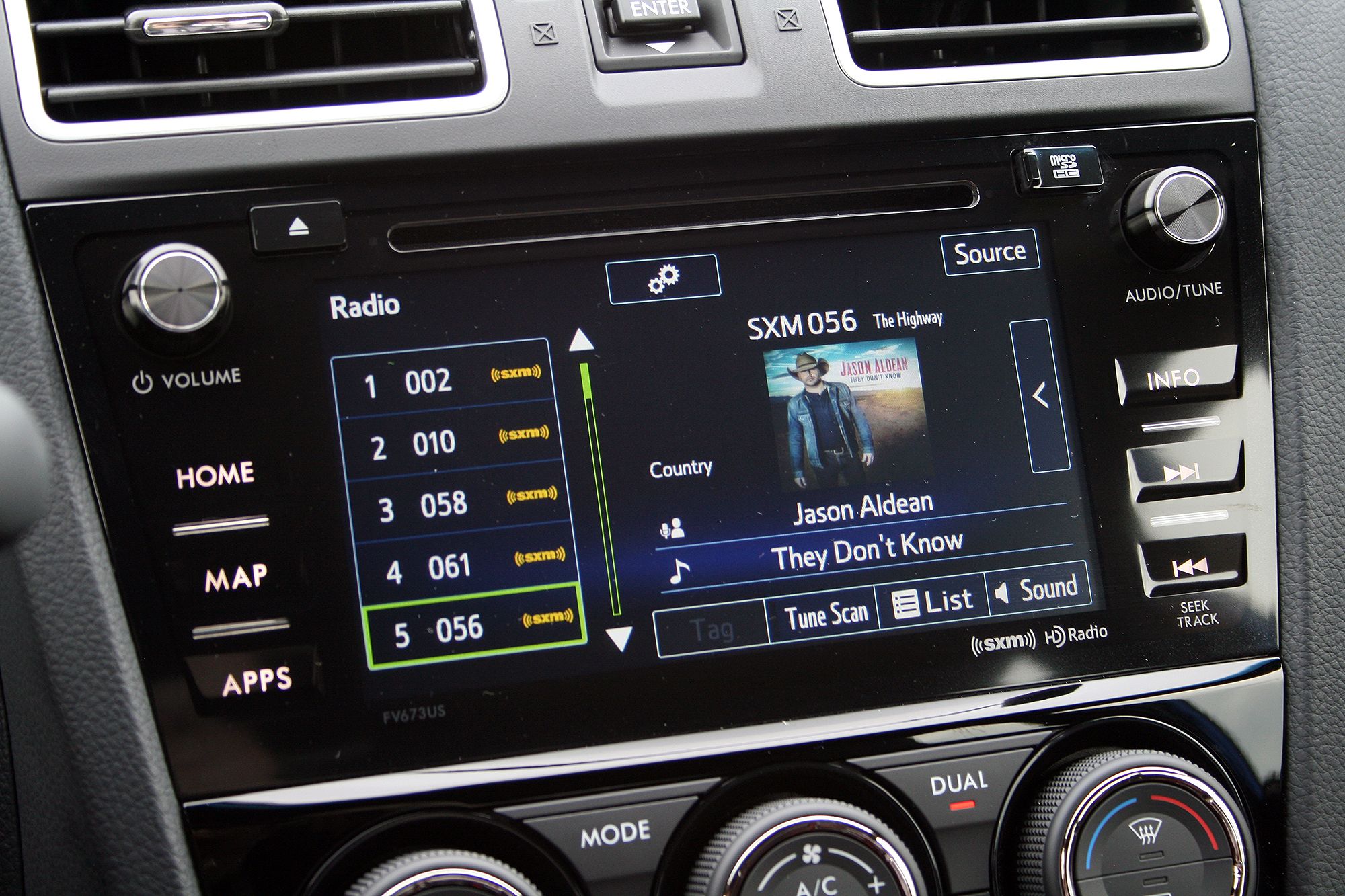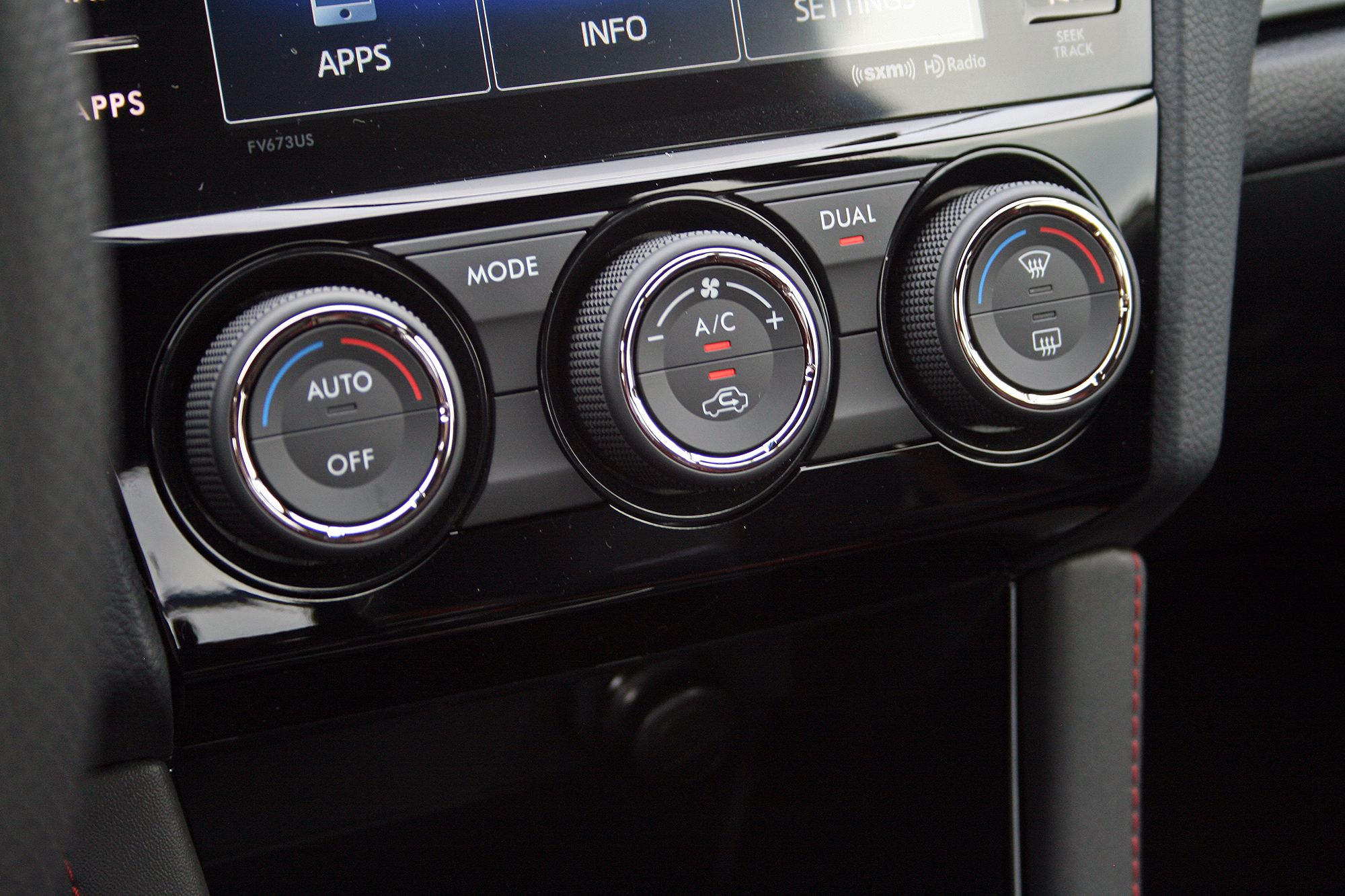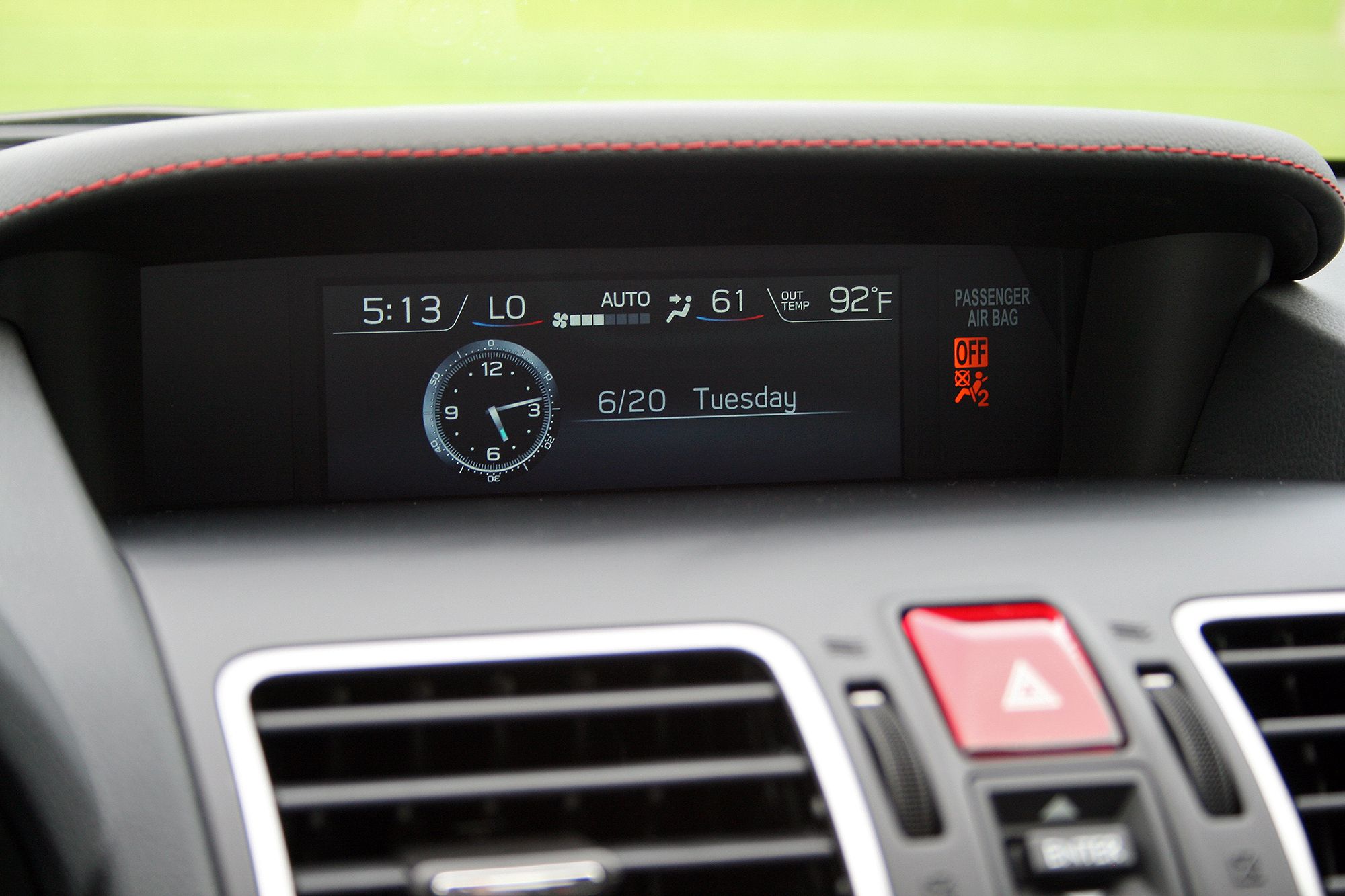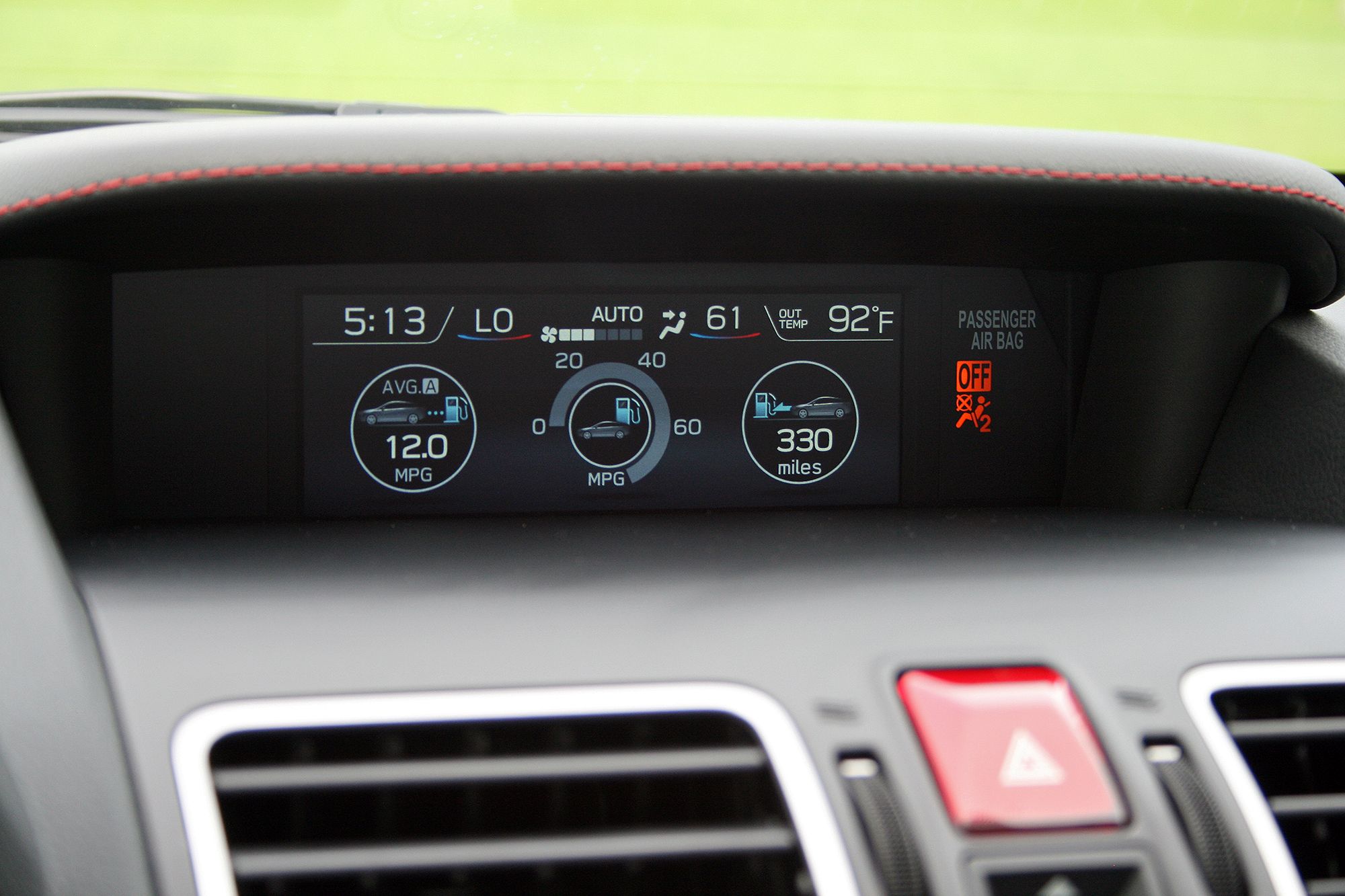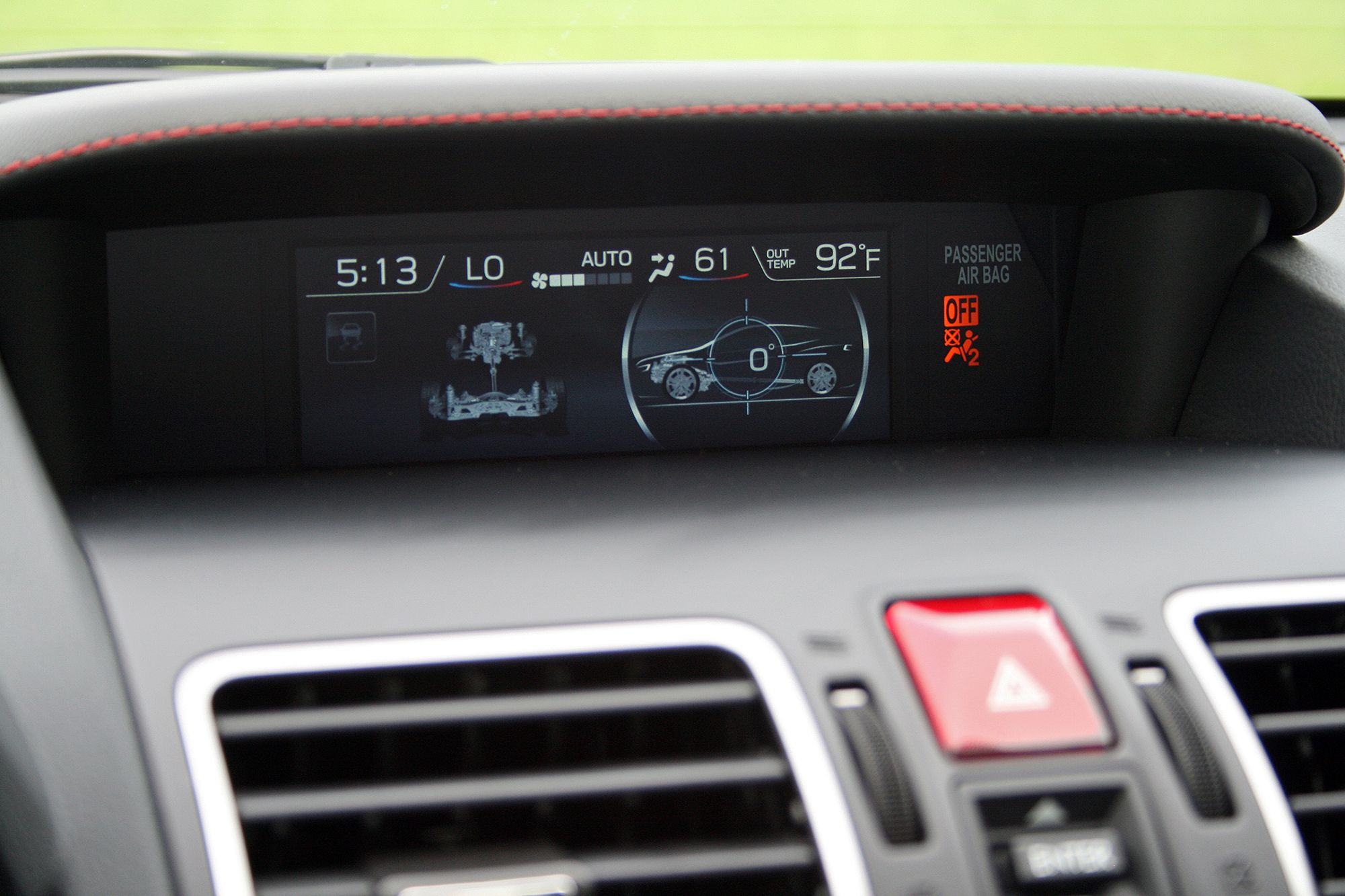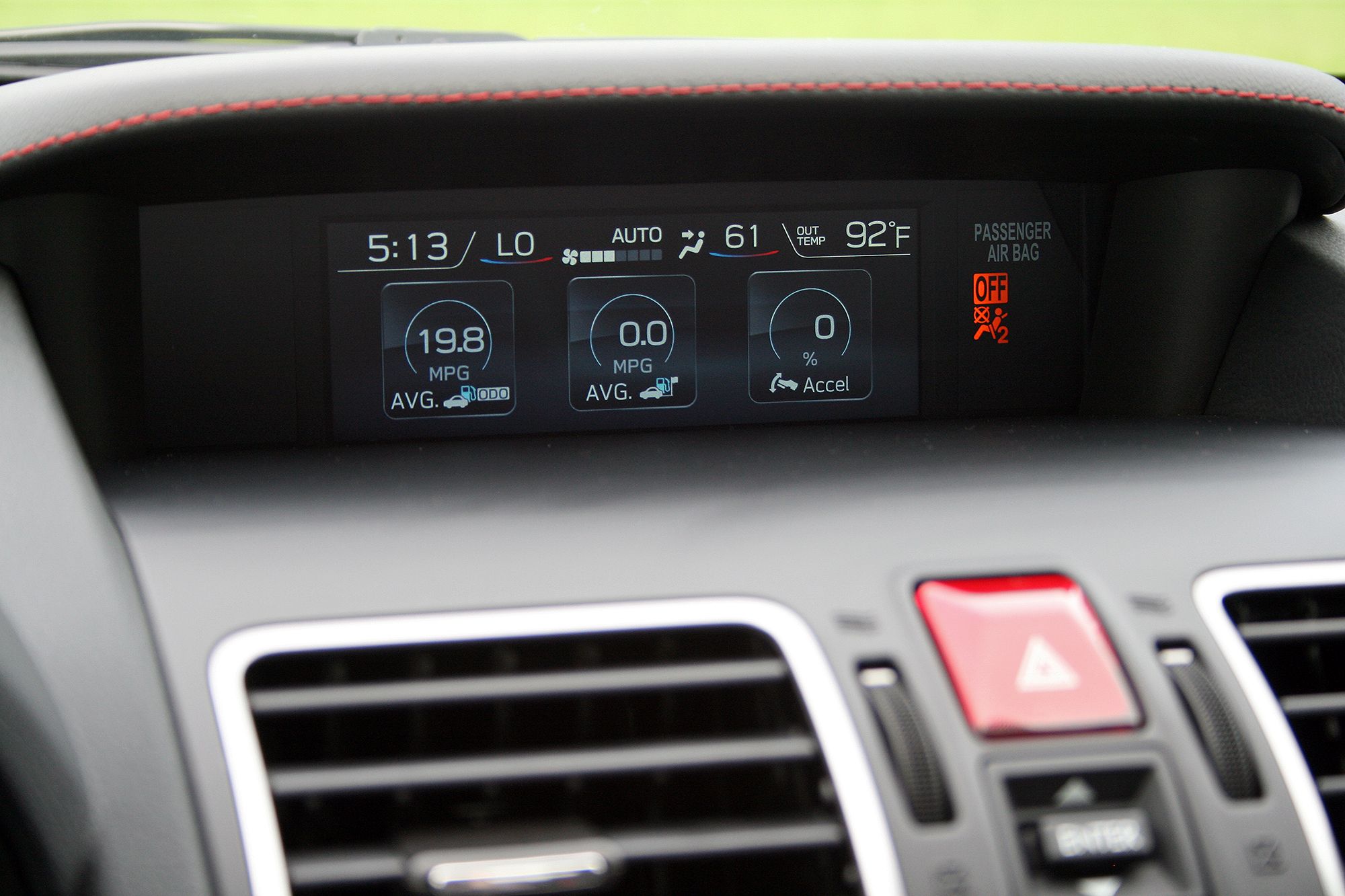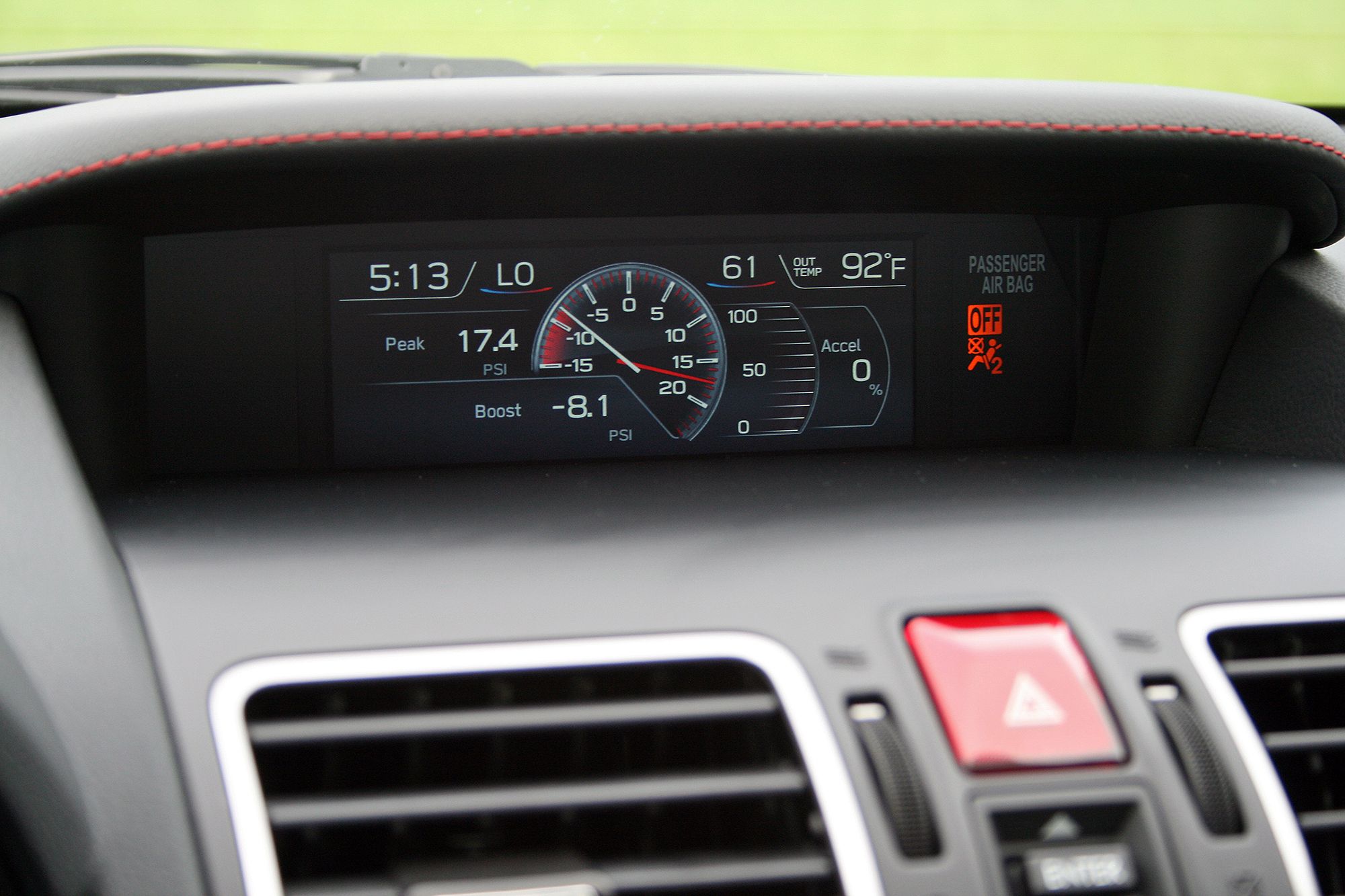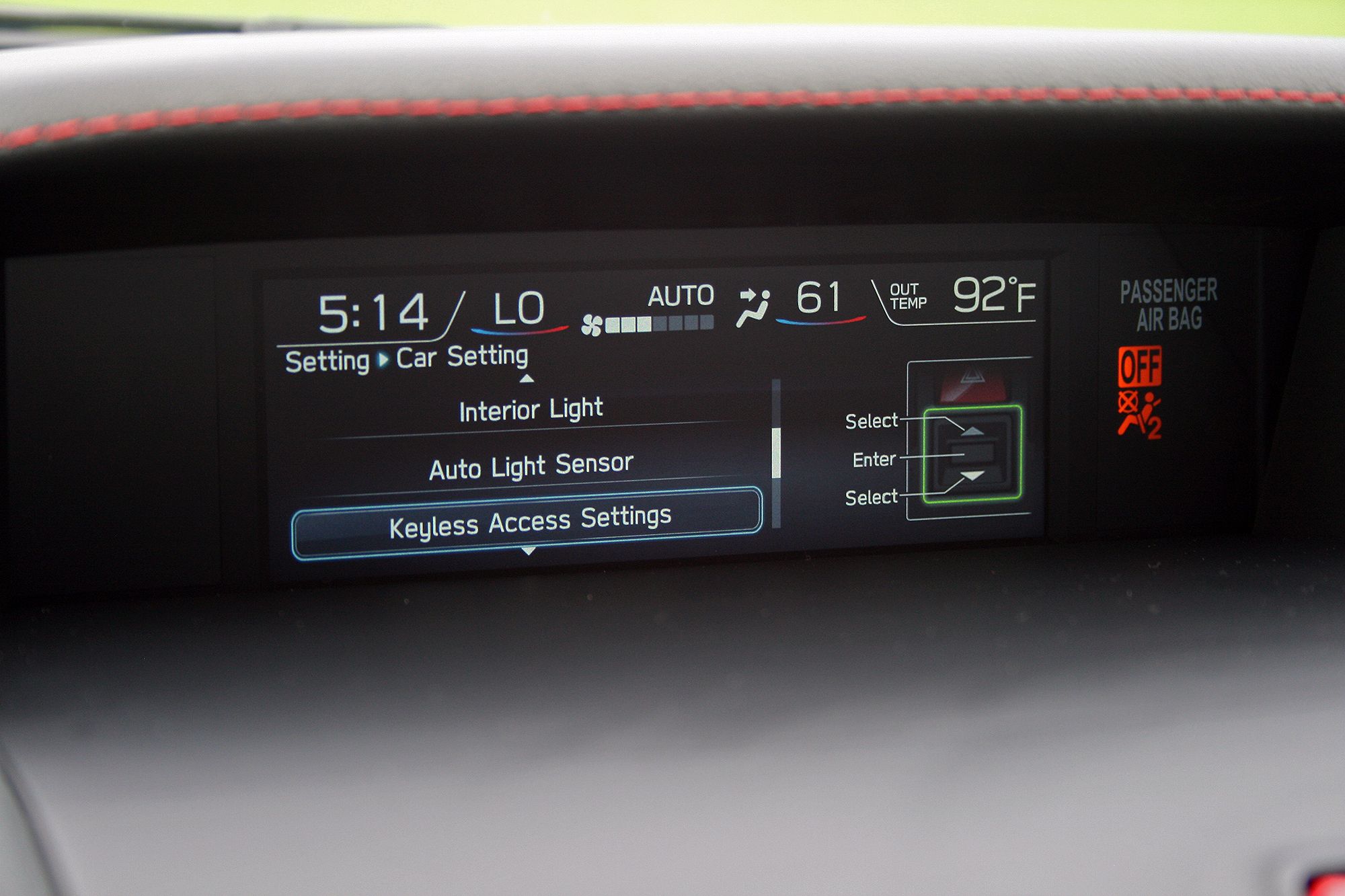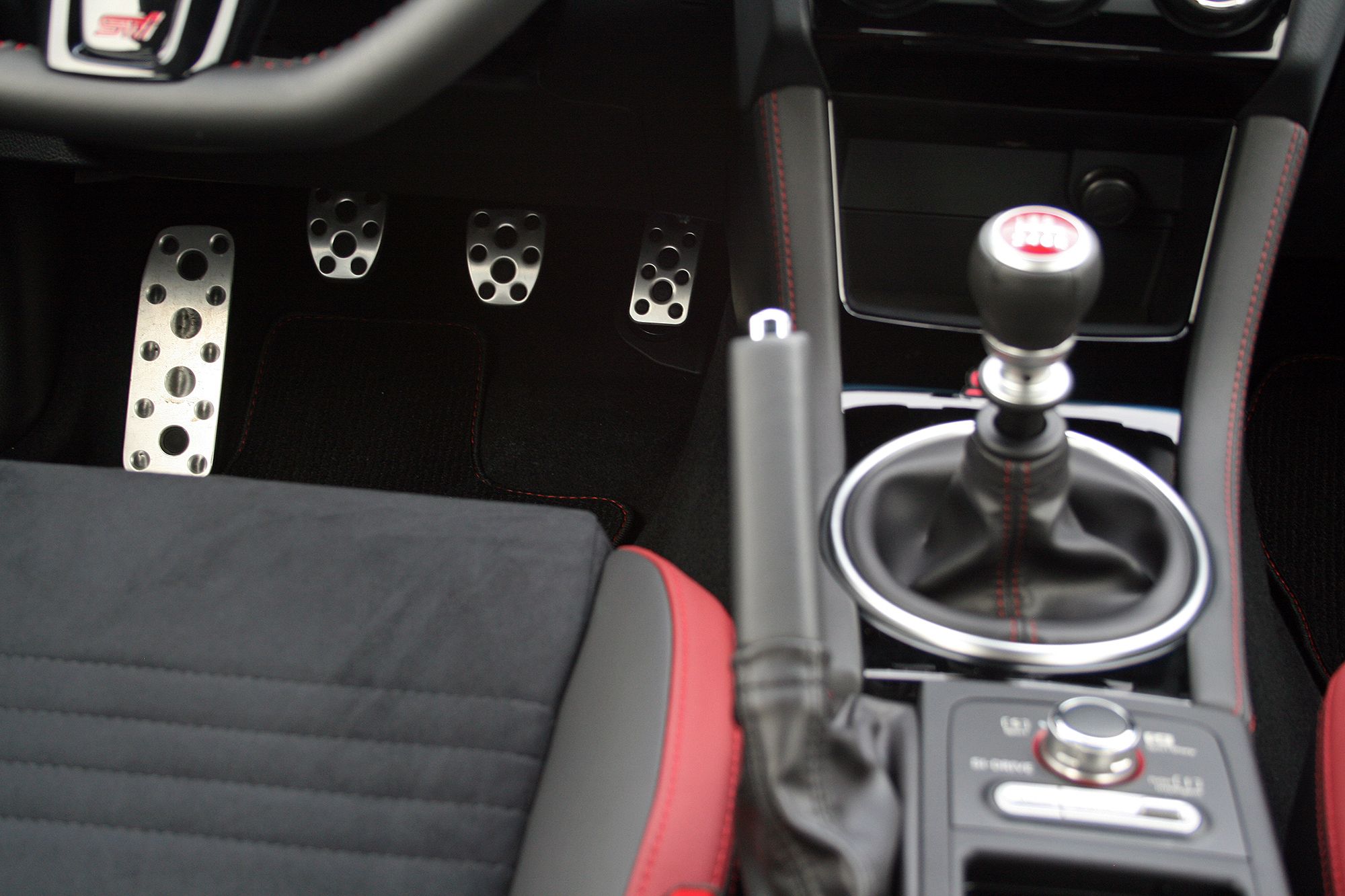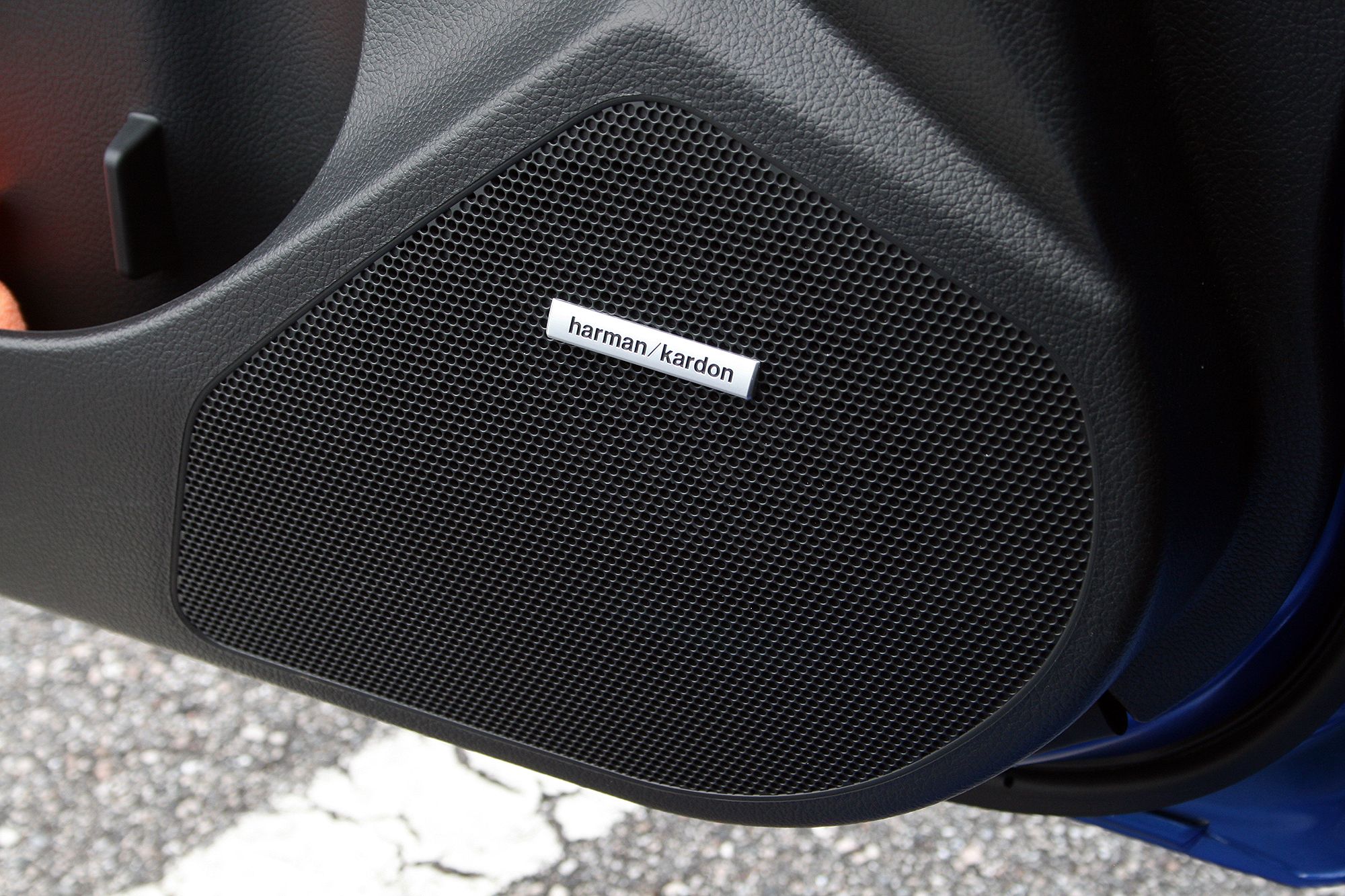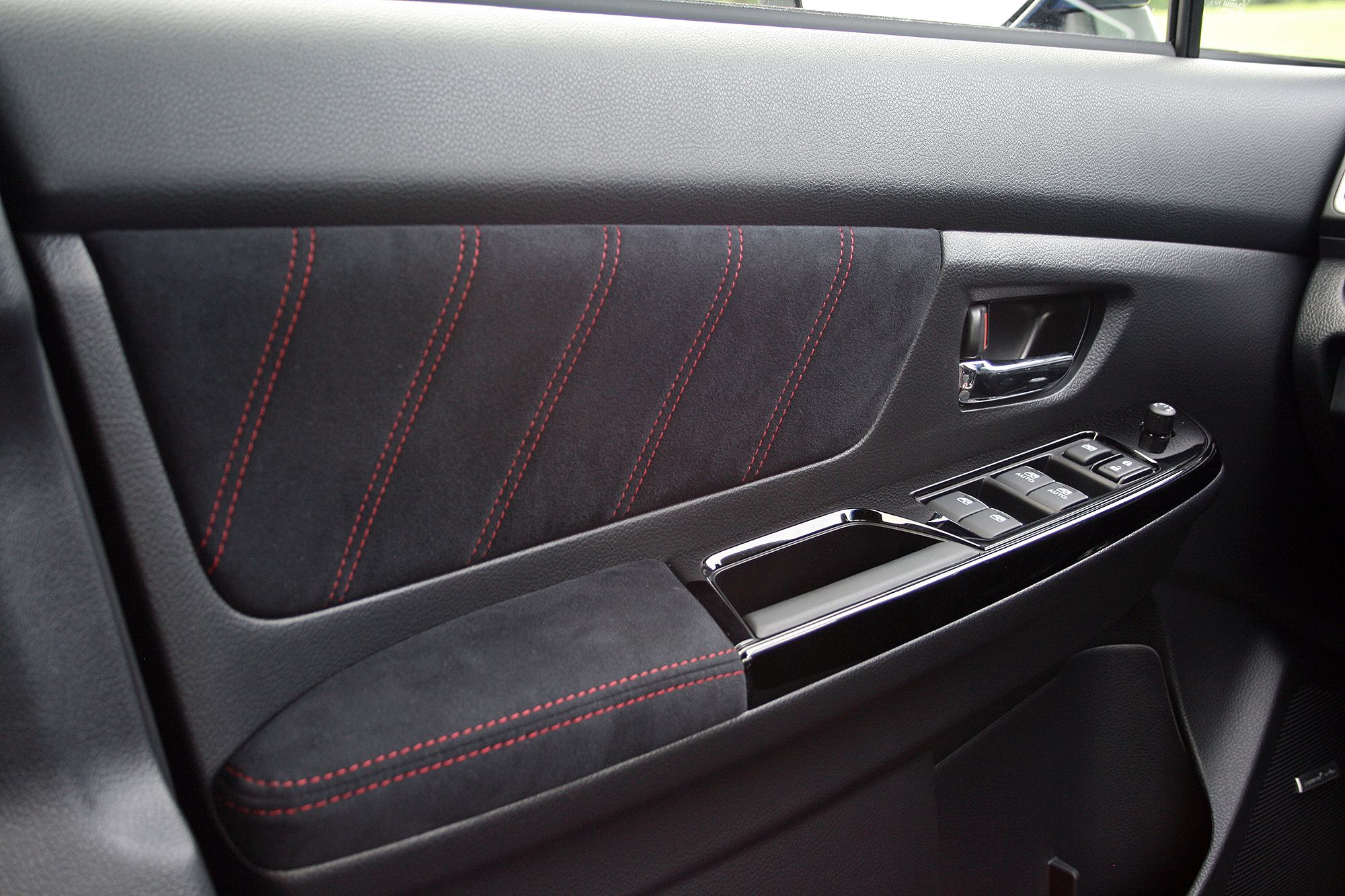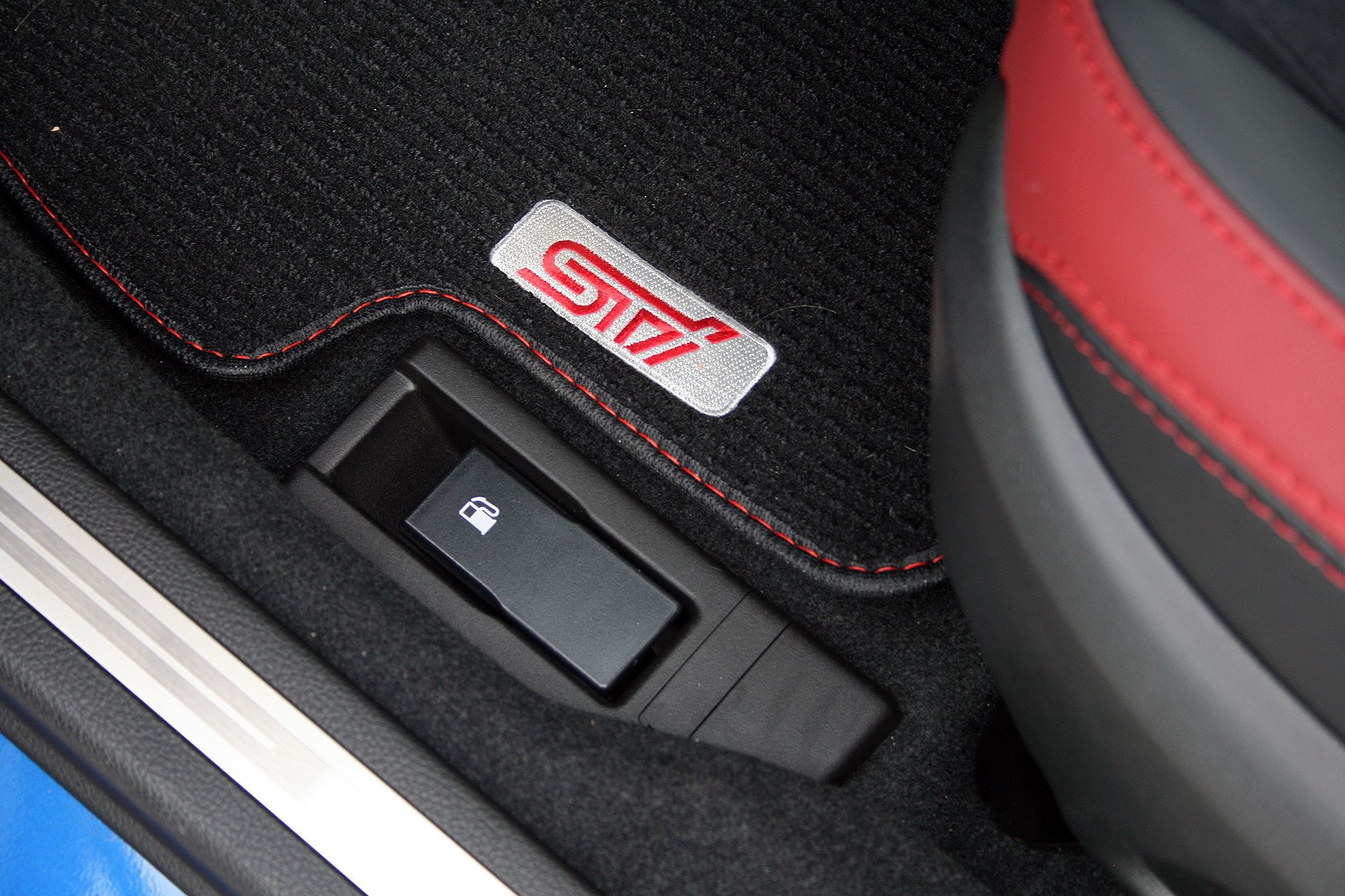Those television commercials say Subarus are made from love. That’s only the case if we’re talking about the love of motorsports and rally racing. See, generations of Subarus, most notably the Impreza WRX and WRX STI models, have taken home World Rally Championship trophies from events around the world. Thankfully, Subaru injects this racing pedigree into the production version of its WRX models, making them some of the best performing, all-weather and terrain racing machines on the planet. And now for 2018, the WRX and WRX STI receive a slight cosmetic refresh paired with a handful of mechanical upgrades.
I recently spent a few days with a 2018 WRX STI Limited painted in that lovely WR Blue Pearl hue. At first glance, the acid-green brake calipers and tall rear wing command the eye’s attention. But looking deeper, you’ll see the front grille is ever so slightly more aggressive than before. A new set of 19-inch, Y-spoke wheels are new, as are those bright brake calipers and the larger rotors they squeeze. Things inside change little, too, through the small changes make big improvements in comfort. A larger information screen atop the dash has new graphics, the StarLink Infotainment system now measures 7.0 inches, the rear seat gets a folding center armrest with cup holders, the door panels have new grab handles, and road noise is hushed thanks to thicker side glass and added insulation. Mechanically, Subaru gave the STI a new fully electronic center differential that’s said to work faster than the previous mechanical and electrical DCCD. Sadly, Subaru chose not to completely rework the WRX STI onto the Impreza’s new-for-2017 chassis. Even the 2.5-liter Boxer engine remains untouched at 305 horsepower and 290 pound-feet of torque. But does this dull the rally-inspired driving experience. Hardly. Keep reading to find out more.
Continue reading for the full review.
2018 Subaru WRX STI – Driven
- Make: Array
- Model: 2018 Subaru WRX STI – Driven
- Engine/Motor: inline-4
- Horsepower: 305 @ 6000
- Torque: 290 @ 4000
- [do not use] Vehicle Model: Array
Video Review
Exterior
Subaru has gone mild rather than wild for its updated 2018 WRX STI. In some respects, this is a major letdown. The Impreza sedan, the basis for the WRX and WRX STI, underwent a heavy redesign for 2017, even getting the new Subaru Global Platform. In other respects, it makes sense why Subaru is holding off. The current WRX STI is only three years old in 2018, having been completely reworked for 2015. Understanding this makes the 2018 changes feel more like a mid-cycle refresh – which it is exactly what’s going on.
The biggest cosmetic changes happen up front. The lower fascia is now larger with a more aggressive chin splitter and a larger grille. Black trim surrounds the grille and the fog lights and turn signals of the 2015-2017 WRX STI are eliminated, with the turn signals relocated to the new headlight assemblies. Speaking of which, the headlights are now adaptive, swiveling to illuminate into turns. The hood scoop is as large as ever, helping give the STI its distinctive look. It’s also completely functional, sending air directly into the turbocharger’s intercooler. Likewise, the rest of the bodywork remains unchanged from years past.
A big upgrade in performance hides behind the new Y-spoke wheels. Six-piston, monoblock Brembo brakes now squeeze drilled rotors with a larger diameter. The rear brakes are also larger than before, capped with two-piston, monoblock calipers. Even the brake pads are new and designed for better stopping performance. And though they look similar to the previous wheels, the new Y-spoke rollers on the 2018 Subi are the first 19-inch wheels ever used on the STI. They come wrapped in 245/35-series performance rubber. The wheel and tire combination not only look great, but also help with on-road performance. Plan on swapping for tires with taller sidewalls if off-road rallying is on the menu.
Out back, the 2018 Subaru WRX STI remains unchanged. That’s not terrible, though, as the car still looks (mostly) fresh. The large wing helps solidify the STI’s racecar theme, but can be deleted at no cost. The lower fascia boasts quad, chrome-tipped exhaust tips and faux diffuser fins. Subaru offers a performance cat-back exhaust, as well.
Sadly, Subaru does not offer the WRX STI in wagon form. That’s too bad, as Subaru sells more wagons than nearly any other automaker, especially in the U.S. Having a five-door STI means added functionally on top of the outrageous performance. And that’s a topic we’ll talk about in a second. But first, the interior.
Outside the Competition
There are a handful of strong competitors in this niche segment, but the Ford Focus RS is perhaps the hottest. All new for 2016, the Focus RS contains all the right ingredients for a hot hatch. It’s based on a standard, low-buck car, it has tons of power, and it looks insane. As aesthetics go, the Focus RS is handsome yet aggressive. The front shares some characteristics with the Mustang GT350 and even the GT supercar. The rest of the car is pure Focus Hatchback, save for the giant spoiler and lower rear fascia. Still, the combination is enough to get the RS’ sporty intentions across.
Exterior Dimensions
|
Ford Focus RS |
Subaru WRX STI |
|
|
Wheelbase (Inches) |
104.3 |
104.3 |
|
Length (Inches) |
172.8 |
180.9 |
|
Width (Inches) |
71.8 |
70.7 |
|
Height (Inches) |
58.0 |
58.1 |
Interior
The unsuspecting eye would have a hard time spotting the changes Subaru made to the 2018 WRX STI. And since the car is only three years old, it’s hard to blame them for keeping the status quo. Subaru faithful will see the information screen atop the dash is new, moving from a 4.3 to 5.9 inches and getting better resolution with revised graphics. They’ll also notice the interior is quieter. Subaru fitted the STI with thicker side glass and better gaskets along the doors. The windshield frame is now filled with foam, too. Rear seat passengers will enjoy the new folding center armrest with cup holders. Beyond that, nada.
Nevertheless, the WRX STI offers a comfortable place to ride and a commanding place from which to drive. The interior really speaks to the STI’s duality – it’s perfectly happy with a cross-country road trip and fully capable of talking a WRC rally. Well, save for all the safety gear. For those sporting times, drivers will appreciate the heavily bolstered Recaro front buckets, the grippy flat-bottom steering wheel, the well-placed handbrake and shifter, and the great visibility afforded by the tall roof and big glass.
When the going is smoother, the Recaros don’t punish. The same is true for the ride quality. Rougher surfaces still bring plenty of tire noise into the cabin, though, which could get old after a while. Enthusiasts who enjoy hearing mechanical noises like turbo spools and wastegate swooshes won't be disappointed. Oddly enough, Subaru could certainly make the exhaust louder and more fun to listen to. Perhaps that’s why they sell a $1,169 STI Performance Exhaust system. Then again, shouldn’t that be included in a $40,000 performance car?
Features wise, my WRX STI Limited comes with Blind-Spot Monitoring with Rear Cross-Traffic Alert, a Harmon Kardon sound system with nine speakers and 440 watts, keyless access and start, a moonroof, an eight-way power driver’s seat, welcome lighting, and the 7.0-inch Starlink infotainment system. This is the older version of Starlink, however, but still includes SiriusXM, Bluetooth, navigation, voice controls, and applications like Pandora, iHeart Radio, Stitcher, and Aha. The system isn’t the greatest, but it works.
Drivers will find the main gauge cluster easy to read, too, with white lettering against a black background with red needles. The small driver information screen does provide a digital speedometer, but is behind the times in functionality and resolution. These issues will surely be resolved when the next-generation WRX STI bows for 2020.
Inside the Competition
The Ford Focus RS has a somewhat dull interior. All but the seats, steering wheel, gear shifter, and auxiliary gauge cluster are basic Focus parts. The plastics are a bit scratchy and the soft-touch dash feels chintzy. Thankfully, none of that matters when driving hard. The Recaro front buckets are heavily bolstered and the Alcantara makes them grippy. The gauges are easy to read and ergonomics among the driving controls are good. Still, the Focus RS is billed as an everyday sports car. That mean the missing rear armrest, air vents, and cup holders become a greater annoyance.
It’s not all bad, though. The Focus RS offers plenty of cargo room with the 60/40-split bench folded. Ford’s SYNC 3 system is pretty good, and dual-zone climate controls with heated front seats make getting comfortable easy – at least for those in front.
Interior Dimensions
|
Ford Focus RS |
Subaru WRX STI |
||
|
Ford Focus RS |
Subaru WRX STI |
39.1/37.9 |
39.8/37.1 |
|
Headroom front/rear (Inches) |
41.9/33.4 |
44.3/35.4 |
|
|
Legroom front/rear (Inches) |
55.6/52.6 |
55.6/54.2 |
|
|
Shoulder Room front/rear (Inches) |
20.0 |
12.0 |
|
|
Cargo Volume (cu. ft.) |
91.0 |
96.6 |
Drivetrain
The 2018 Subaru WRX STI soldiers on with the same 2.5-liter Boxer four-cylinder. The engine has been around for a decade making roughly the same power, so we’re definitely looking forward to an update. Still, 305 horsepower is incredibly fun. As expected with a turbo-four, horsepower peaks high in rev range – at 6,000 rpm, to be exact. Peak torque happens midway up the tach, maxing at 290 pound-feet at 4,000 rpm. While that’s far less than the Ford Focus RS, and while the STI weighs 3,525 pounds, the car blazes forward when the boost rolls on. Maniacal laughter is my usual response to fast cars and the STI induced plenty of Dr. Evil chuckling.
Adding to the fun is the six-speed manual transmission. Its short throws are matched by a light and predicable clutch petal. Upshifts are easy to nail and downshifts happen effortlessly thanks to the Boxer’s rev-happy nature.
Now to that new center differential. Subaru swapped the mechanical and electrical unit for a fully electric gearbox, which is said to improve drivetrain smoothness and responsiveness. It’s hard to tell a difference not having driven both systems back to back. Controls for the DCCD, or Driver Controlled Center Differential, are the same. An Auto/Manual button toggles between the two modes, while a rocker switch dials in adjustment. Manual mode provides six degrees of lock-up. Auto mode gives a +/- adjustments. Unless you are Colin McRae, leaving the system in Auto mode produces the best results. Drivers should use the Auto – for sporty driving on dry pavement and Auto + for low-traction conditions like snow, rain, or gravel.
Subaru engineers spent countless hours developing and programming the WRX STI’s Symmetrical AWD system to provide the best grip possible over every conceivable surface. But not only is the computer smart, it has capable hardware, too. Limited slip differentials at both axles minimizes lost grip and the brake-based torque vectoring system helps point the STI where the driver wants. The result is an immensely capable dirt-road bomber and all-weather sports car. The WRX STI certainly deserves the title of sports car. On dry pavement, it hits 60 mph in just 4.8 seconds and through the quarter-mile in 13.3 seconds at 105 mph.
Behind the Wheel
The Subaru WRX STI is an honest driver’s car – that’s a definite truth from a week behind the wheel. It’s extremely tossable and exudes a very playful attitude through the steering wheel. The throttle is anxious to rev, especially in Sport and Sport # modes. (For those not musically inclined, that last one is pronounced Sport Sharp.) Matched with a willing engine, the little 2.5-liter soars towards its 6,700-rpm redline with ease, even under load. It also makes downshifts incredibly easy to get right. Despite its 3,500-pound curb weight, the WRX STI feels light. The suspension offers a great feel of the road, with enough vibrations coming through for that seat-of-the-pants driving. Still, your grandma wouldn’t mind a lazy trip across town.
The six-speed manual’s shift pattern does take familiarization before speed shifting; third gear is a bit further right than expected. Still, I never found myself in the wrong gear. As mentioned, the engine has no guts below 2,000 rpm, making even mundane starts sound like a challenge to race. Nevertheless, the car is perfectly happy cruising town.
Powering the Competition
The Ford Focus RS out-powers the competition by a long shot. Its 2.3-liter EcoBoost four-cylinder makes 350 horsepower at 6,000 rpm and 350 pound-feet of torque at 3,200 rpm. The EcoBoost boasts all the modern gadgets, including a turbocharger, intercooler, direct fuel injection, and variable valve timing,. Like the WRX STI, a six-speed manual transmission is the only gearbox and AWD comes standard. The RS’s AWD system doesn’t allow for driver intervention, but rather decides for itself how best to distribute torque. In fact, it can send 70 percent of the power to the rear wheels. Normal driving has more power send forward.
The Ford also boasts four drive modes: Normal, Sport, Track, and Drift. Of course, Drift Mode got the Focus RS plenty of attention from fans and the media, helped by Ford’s association with Ken Block and his Gymkhana videos. At full tilt, the Focus RS will hit 60 mph in just 4.7 seconds before topping out at 165 mph. Against anything but a supercar, the RS runs like a scalded dog thanks to its flat torque curve. To say the RS is fun would be a massive understatement.
|
Ford Focus RS |
Subaru WRX STI |
|
|
Engine |
2.3-liter EcoBoost engine |
2.5-liter flat four-cylinder “boxer” |
|
Horsepower |
350 HP @ 6,000 RPM |
305 HP @ 6,000 RPM |
|
Torque |
350 LB-FT @ 3,200 RPM |
290 LB-FT @ 4,000 RPM |
|
0 to 60 mph |
4.7 seconds |
4.6 seconds |
|
Top Speed |
165 mph |
160 mph |
|
Transmission |
6-speed manual |
6-speed manual |
|
Fuel economy city/highway |
19/25 |
17/23 |
|
Curb weight |
3,459 Lbs |
3,391 Lbs |
Pricing
The hot-hatch/AWD segment is hotter than ever, and vehicle prices are reflecting consumer interest. High-$30,000 is the going rate these days, with the Ford Focus RS starting at $36,120 and the Volkswagen Golf R commanding $39,375. The new 2018 Honda Civic Type R is the lowball outlier here, with an MSRP of $33,900, though it doesn’t have a fancy AWD system.
Subaru falls mid-pack with pricing, charging $36,095 for the 2018 WRX STI. Stepping up to the Limited trim pushes the price to $40,895. My tester came with zero options, so only the $860 destination fee added to the price. The grand total: $41,755. While that’s pricy, Subaru does have another option – the less-powerful yet still incredibly fun WRX starts at $26,995. Even a fully-loaded WRX Limited costs under $32,000.
As for the Ford Focus RS’ price, it starts at $36,120. However, Ford offers quite a few options, including the $2,785 RS2 Package loaded with convenience features and the $1,990 performance wheel and tire package, which adds Michelin Pilot Sport Cup 2 tires. Basically, they’re DOT-approved racing tires and come on several of the hottest performance vehicle in production.
Competition
Volkswagen Golf R
The Golf R is one of the most well-recognized hot-hatches in the business – and for good reason. Like any hatchback, it works well as an everyday car. But push it, and the little VW lives up to the “R” badge. It is down on power to the WRX STI and Focus RS, but its 292 horsepower and 280 pound-feet of torque are more than sufficient for hitting 60 mph in 4.9 seconds. Much credit is due the optional seven-speed DSG gearbox. It’s one of the smoothest dual clutch units available and should give customers seriously consider abandoning the clutch pedal. Purists will stick with the six-speed manual (and keep an extra $1,100 in their pocket) – and be handsomely rewarded. The gearbox has a smooth operation and easy clutch. Of course, every Golf R comes with VW’s 4Motion AWD, and for 2017, the DCC adaptive chassis control.
For those not wanting that boy-racer vibe, the Golf R is the best solution. The Subi, Honda, and Ford all have overstated exteriors. Thankfully Volkswagen doesn’t follow that trend, proving some aesthetic choice in the hot-hatch segment. Pricing for the 2017 Volkswagen Golf R starts at $39,375. The dual clutch transmission and body color are the only major options.
Read our driven and review on the Volkswagen Golf R here.
Honda Civic Type R
Not many economy cars make headlines like the Honda Civic. Multiply that by 100 for the Type R. As of this writing, the Type R is just hitting showrooms. Stories of dealers charging $20,000 over its MSPR of $33,900 are flowing in, and the first production example just sold for $200,000. It’s no wonder Americans are excited; the Civic Type R has never been offered here.
Behind that aggressive grille is a 2.0-liter turbo-four with 306 horsepower and 295 pound-feet of torque. it almost seems like Honda simply wanted to best Subaru’s numbers. A six-speed manual is the only choice here, as is front-wheel drive. That’s right, this is the only hot-hatch without AWD. Honda injected some Voodoo magic into the Type R’s front suspension to counter torque steer, especially with peak torque happening at only 2,500 rpm. And despite the lack of AWD, the Honda hits 60 mph in 5.0 seconds and has a top speed of 170 mph. Coincidently, FWD is far lighter than a complex AWD system, saving nearly 400 pounds off the STI’s curb weight.
The 2017 Honda Civic Type R is also the only car here I haven’t driven. Hopefully that changes in the near future, and I suspect it won’t disappoint. Stay tuned for that.
Conclusion
Subaru’s minor updates to the WRX STI for 2018 aren’t groundbreaking. On the other hand, we’re glad Subaru isn’t letting the car stagnate. While a perfect world would include the WRX based on the new-for-2017 Impreza and its Subaru Global Platform (and the return of a hatchback option!), it’s hard to complain about progress. Major progress won’t happen until 2020, when the WRX and WRX STI finally make the SGP jump. By that time, the Impreza will likely have another refreshed under its belt, which it could share with high-strung brother. Until that time, enthusiasts can still be happy. The WRX STI continues to perform well against the competition and look sharp with its new face. Best of all, it’s darn good at inducing maniacal laughter from its driver.

